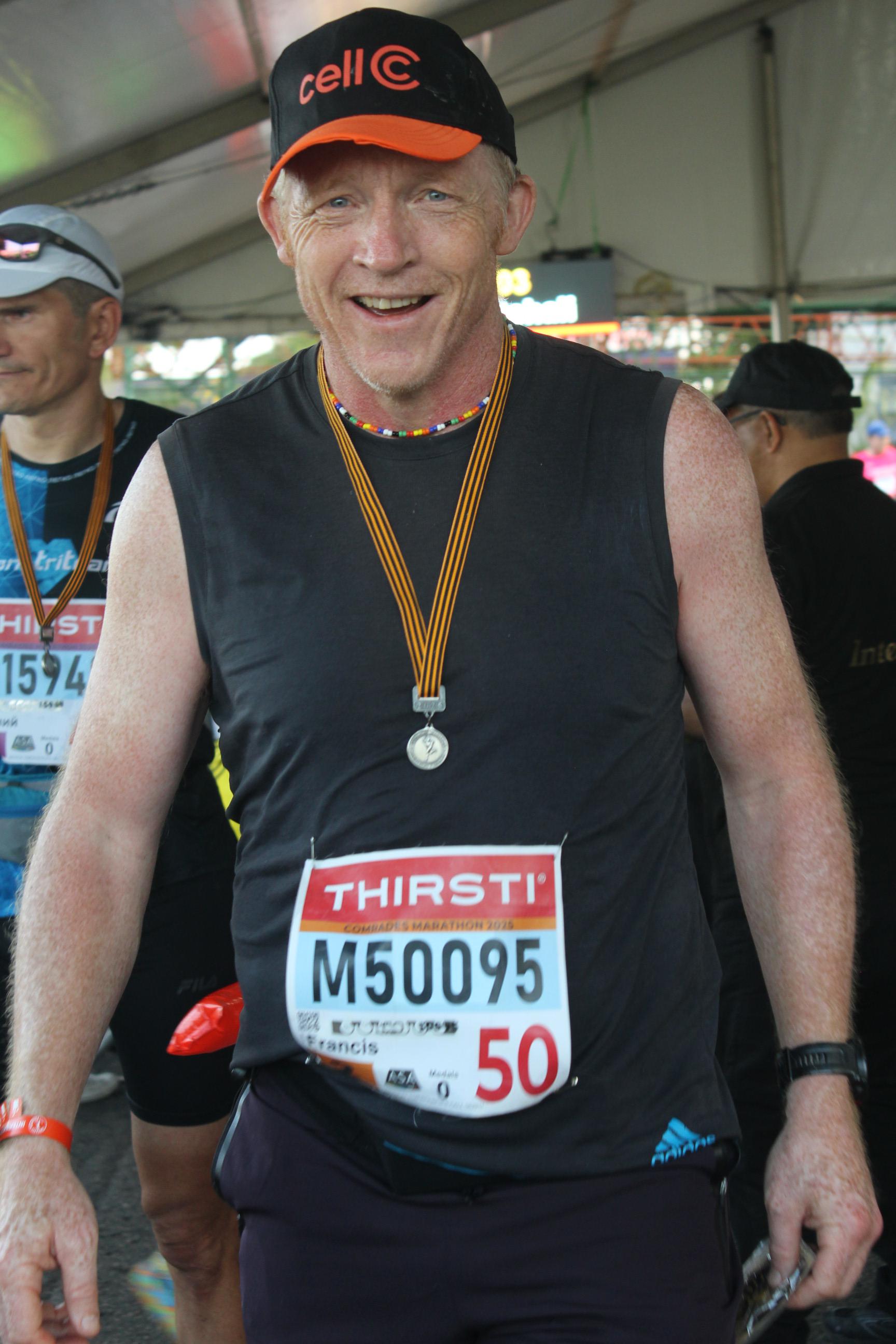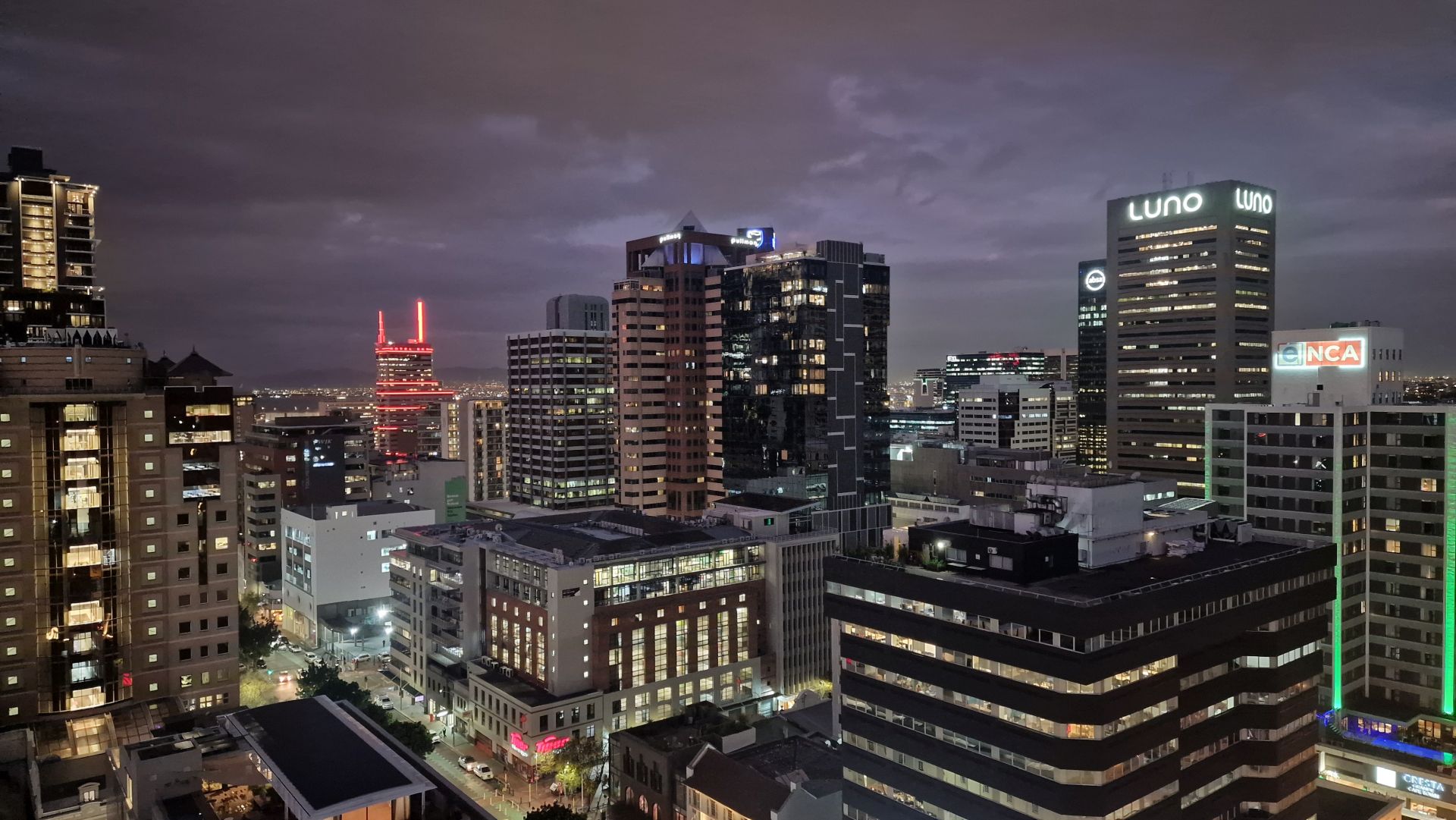
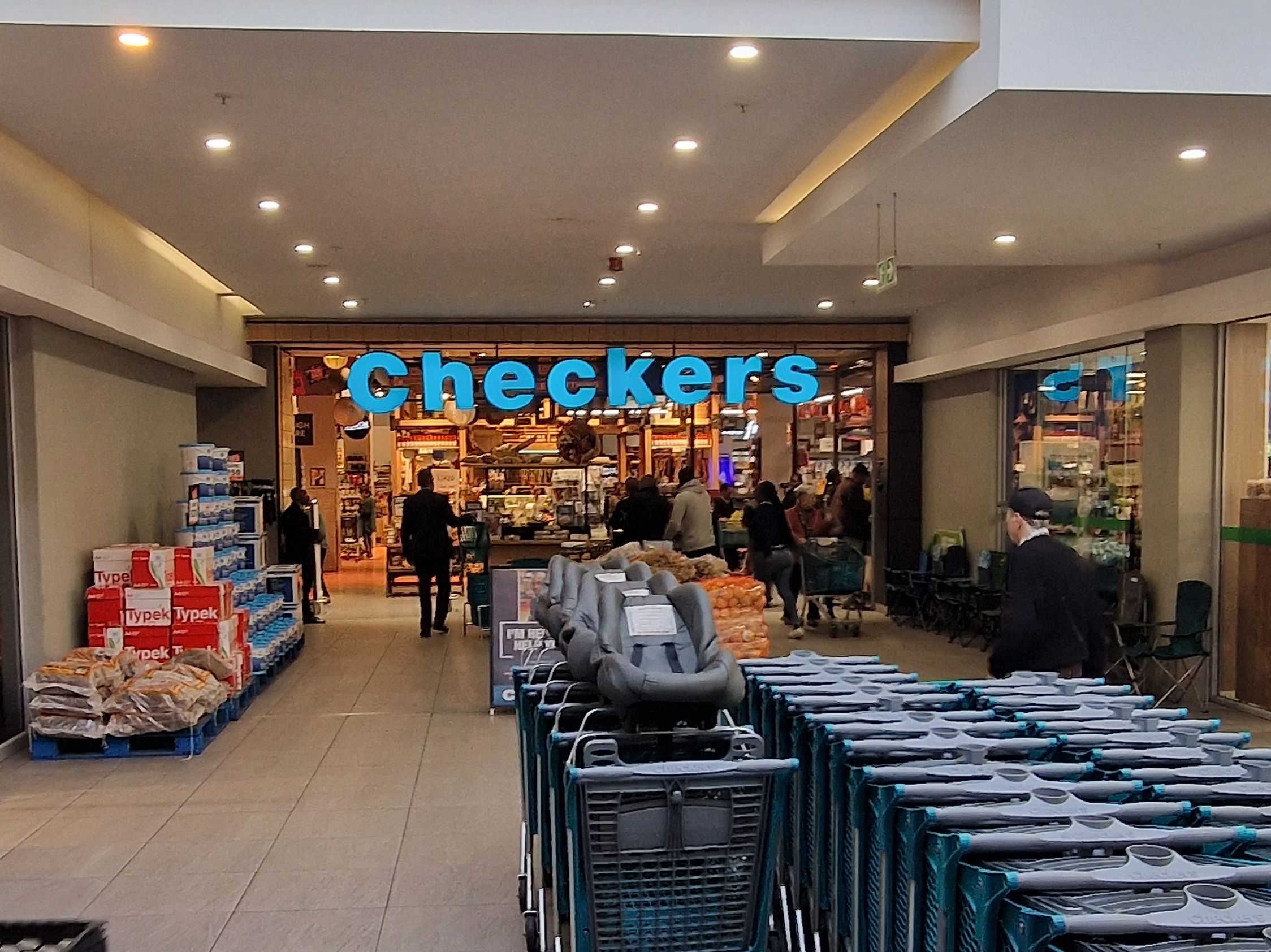
In this 3 part feature Frank Wainwright visited Smollan in Johannesburg to learn about the agency which is so heavily invested in UK field marketing and around the world (part one). The visit gave Frank pause to think about team spirit at the UK Advantage Smollan agencies (part two). Frank also got to experience a broader feel for the country whilst touring it and engaged with its landscape and people physically by completimg the world famous 56 mile ultramarathon, Comrades (part 3).
Part One: From South Africa to the world – The Smollan Story so far
Frank Wainwright toured South Africa in June and called in to Johannesburg to test out the Smollan welcome – at the HQ of the global agency that fields brand teams all around the world
When Fred Smollan set out with his paint sales van in 1931, he must have been multitasking with one eye on the rugby field. Three international appearances were topped off when he later scored a try in a winning Transvaal team against the British Lions in 1938. Such wins make legends.
Smollan was even better at business than he was at rugby, forging a business that would be elevated by son Doug to worldwide success, the classic family business that has instilled the family principles and spirit across 5 continents, 61 countries with 75,000 people employed.
It is very notably a family-led operation. Fred’s grandsons David and Michael head the company as CEO and chief brand experience officer. The company is also 33% owned by global media and advertising group WPP. The result is a beguiling mix of family mottoes and corporate messaging, and I would say it gels well.
The result has been a company that is renowned and loved for doing things the right way. When Doug and David were putting down the global expansion plan 10 years ago, Doug had already been sitting on boards that help businesses fight crime in South Africa and working towards Nelson Mandela’s ‘Champion Within’ entrepreneurship programme.
Given the principles that underpin this business I was unsurprised to be met at the door with a motto. “A customer is the most important visitor on our premises”. This is an agency-wide passion point that made sure I knew that as a visitor to Johannesburg HQ I was to be looked after. And I was, initially in the company of Cluster Executive SA, Pierre Groeneveldt, Group Client Development Executive, Carli Goldblum and Growth Executive SA, Refiloe Dikgole. We sat down to chat though the business.
Defining Smollan is a challenge as the agency has so many touchpoints. Carli is quick to deliver some of the bullet points of passion for the business – “We help our clients brands get seen to be sold”, she says, a reminder to me of the core principle that drives so much of field marketing. Pierre adds a further eye-opening stat “We engage with over 20 million shoppers” he says.
There is pride in the room as they talk me through the history. Fred Smollan is heralded as “The first outsourced sales rep in the country”.
“This is a business that is grounded on sales,” says Pierre.
The team are keen to point out that the Smollan business as I see it today is likely to change. It soon becomes clear that change is almost a constant as the fast-moving ambitions of its chairman are set out. Any view of a business like Smollan, that brings people, process and technology together is likely to be in regular flux. Adaptations to the onwards march of AI for instance would invariably have a variety if implications across the Group.
For now though, Refiloe tells me the core delivery is “Engaged people, enabled by technology and directed by data.”
Best practice is core to Smollan with the core aim of “sharing best practice around the world”. The team agree together that something unique at Smollan is the ability it has to leverage best practice and that seems credible to me. I have seen the UK agencies close adherence to the Great Place to Work Scheme and seen the way that REL Field Marketing and Powerforce invest in wellbeing, upskilling and teamwork. It is clear to me how Smollan would have seen them as an ethically good fit, as well sharing the same drive for sales and results.
“We refuse to participate in an environment where we commoditise people” says Pierre before walking me through the varieties of sales and merchandising teams Smollan operates in stores in South Africa. Smollan offers a range – dedicated, syndicated, category specialised, hybrid and tactical. It’s an approach which means both client and agency can keep an open mind on the best possible value driven relationship. Pierre headed the dedicated Diageo sales team before his current role at Smollan but it is clear he values having a wide portfolio of options to offer to brands. He reels off a who’s who of brands that operate across the various field platforms with Smollan and it sounds a very comprehensive list.
Field teams are equipped with the latest version of Smollan’s field sales application called Smart 3 brining Smollan and the brands it represents a powerful two way share of data with the field.
Of course, Smollan isn’t only about delivering retail teams in the field. The emergence of UK based Smollan agency IMA, HQ’d in Leeds is indicative of the growing provision of activation and experience.
Smollan also gets involved with the provision of Digital Commerce and Virtual Advisors.
If the International expansion is anything to go by, Smollan is a very self-determined business. A 10 year old video sets out Doug and David Smollan’s international expansion ideas at a time when Smollan’s international presence was fresh in India and unseen elsewhere. It is a process that David has forged ahead with. The UK scene was a part of that expansion with investment made into REL Field Marketing and Powerforce, along with American partner agency Advantage Solutions back in 2015. A ten years younger Refiloe is in the video as it is setting out its ambitions and principles. Her personal growth and that of the agency have clearly been realised in the 10 years following.
I realised during my visit to South Africa that the country offers a full range of challenges and store types for field marketing, and that consequently a full range of training and enabling has been developed. It has made Smollan into something of an authority on personnel development and wellbeing – set against a range of different socio-economic circumstances nationally and internationally. The business supports township sales in South Africa, paving the way for safe employment in areas where the country has a high crime rate. The shopper range in South Africa also extends to areas of high affluence and brand ranging, and it was in these circumstances that I saw their reps in action representing syndication in store in upmarket supermarket Checkers. It was great to meet a rep in the store and talk to him about his work. It turned out he was a relatively recent starter and showed us the Smart tech that he works with to report on multiple brands in store. He had come from unemployment into his role with Smollan, a big deal in a country with 32.9% unemployment currently. Smollan in South Africa recognises and acts upon the government’s Broads-Based Black Economic Empowerment Act delivering, amongst other initiatives, a share scheme which gives the business a sense of common purpose.
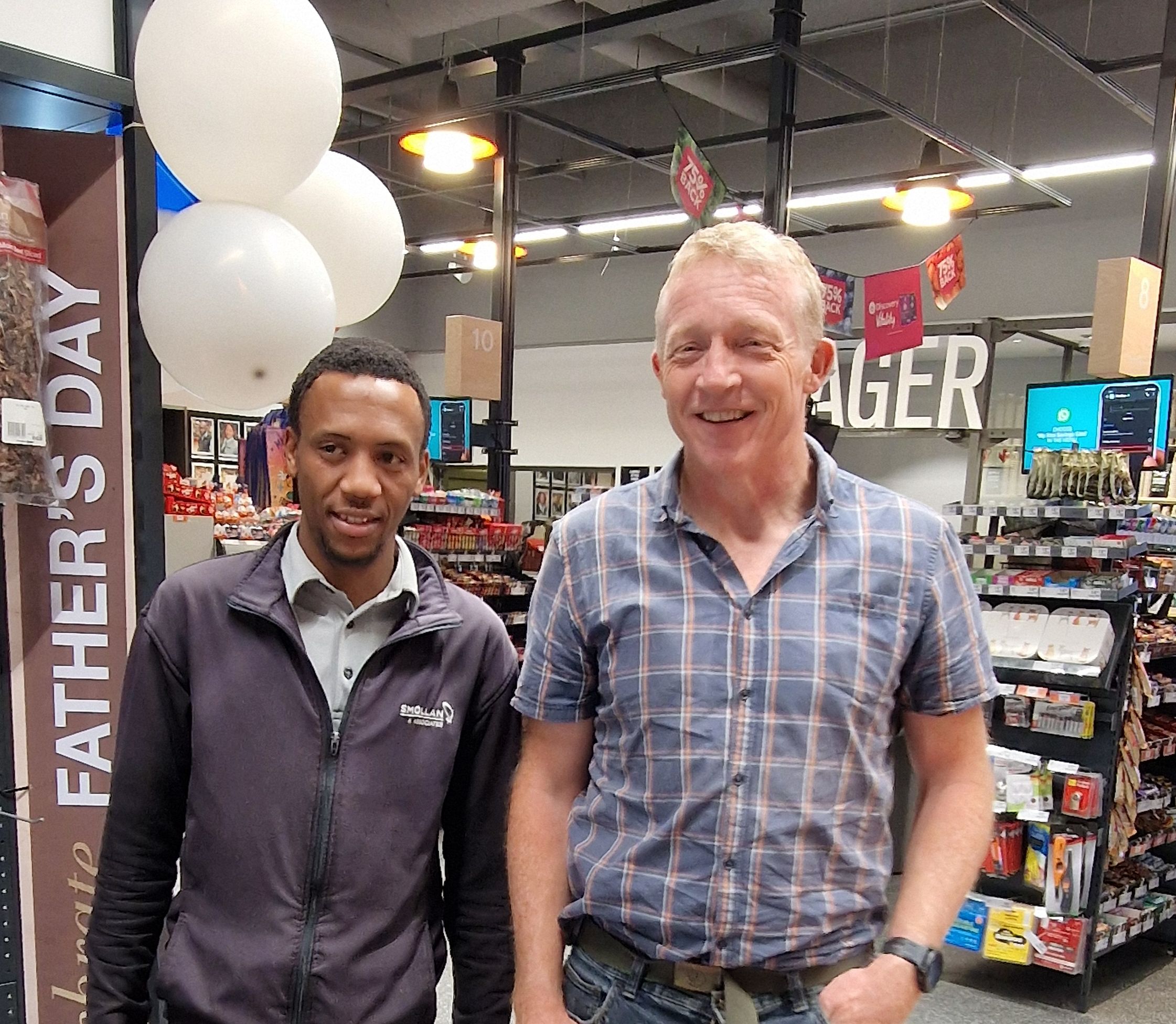
Driving economic success and helping individuals find their feet is a clear part of this ethical success story. India is a vital part of the Smollan story and the business there is supportive of the government’s Mission Shakti, a women’s empowerment programme.
At one time it was the stated intent of chairman Doug Smollan that every new recruit at Smollan would reach the level of comfort in their lives that they could sit down and relax with a good glass of wine over dinner. And whilst not everyone need be a wine drinker, the concept of intended conviviality and welcome holds true.
Certainly, Smollan Liquor is a core division in South Africa. For my store walk I was accompanied by Justin Du Rand, who is the Ops Lead for Smollan Liquor. Justin showed me some of the store presentation and merchandising requirements of some of South Africa’s stand out wine brands. It was great to see the welcome accorded to Smollan by the store managers that we met. During our tour Justin split off to buy a good vintage red from the famous Stellenbosch area. When I was set down outside my hotel on departure, he slid that bottle into my bag, a real and symbolic way of passing on the Smollan spirt of welcome. My cherished visitor status was consistently delivered from arrival at Smollan right through to those proverbial last 50 yards.
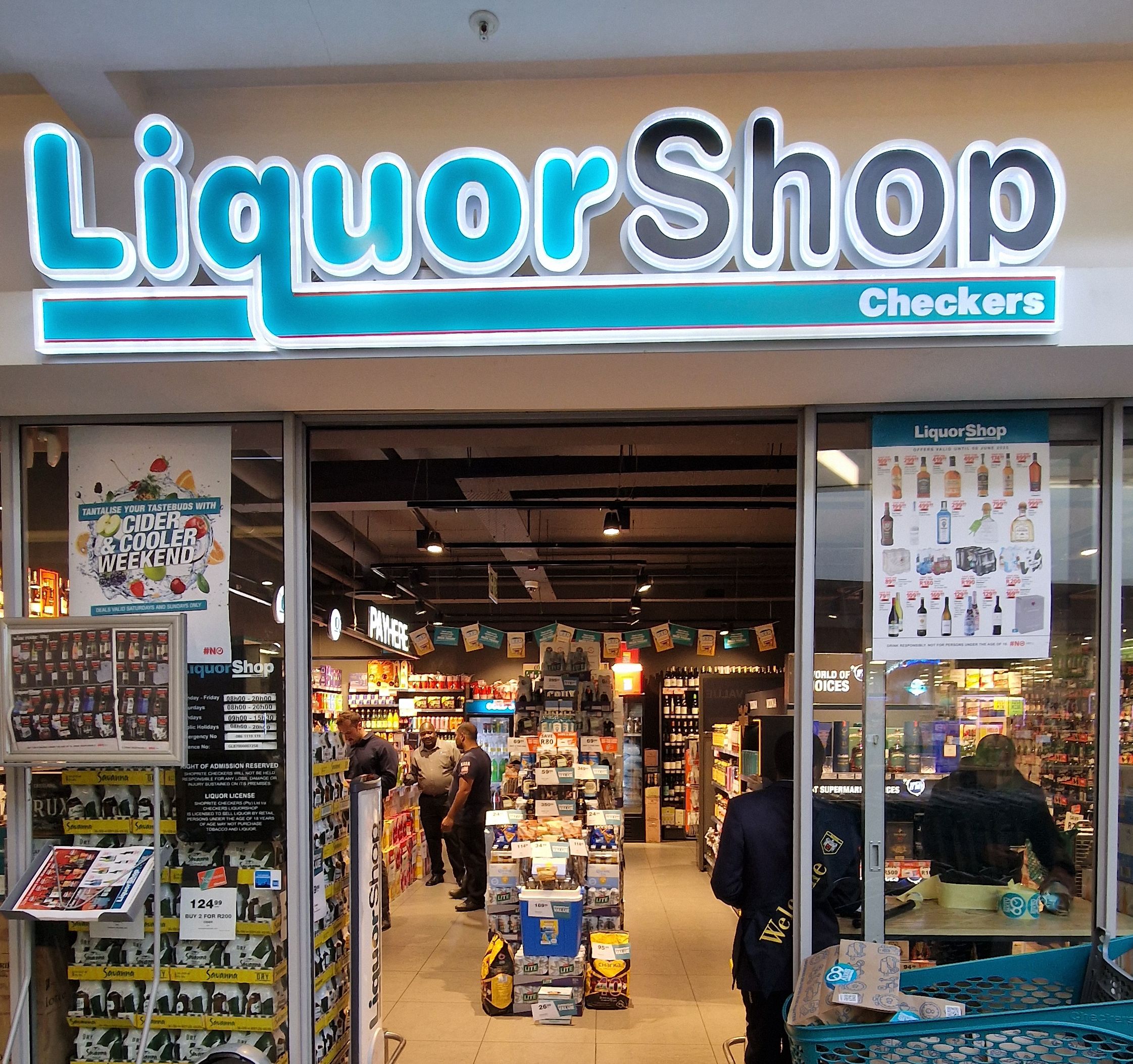
Part Two – Team Spirit – the people power driving UK success in the field
REL Field Marketing and Powerforce – Field Marketing with Advantage Smollan in the UK
In 2015 the UK scene saw two leading agencies, REL and Powerforce brought into the Smollan group as an alliance was formed between the American agency business Advantage Solutions and Smollan Group. The new holding company Advantage Smollan was created.
At the time David Smollan was CEO of Smollan, a position he retains. Back in 2015 he stated “To fulfil our promise as a best-in-class business services company across Europe and on a global scale, we need the absolute best in terms of people and resources. As we look to complete our geographic footprint in Europe and beyond, we are targeting companies who are number one in their markets and who share our entrepreneurial culture and passion for adding value as they will have an ownership stake in the business and accountability for our growth together.”
At the end of 2023 a shift in emphasis saw Smollan become the majority shareholder of Advantage Smollan with 50.4% of the Group with Advantage Solutions saying that the new arrangement allowed it to have a greater focus on its core US activities.
10 years on from Smollan’s initial commitment the determination to be ‘best in class in terms of people and resources’ goes unabated. If you look at David Smollan’s 2015 statement it seems clear that the businesses they acquired were already delivering Smollan style ambitions and that since then the good cultural fit has been seen time and again at our FMBE Awards.
The core ‘People and Resources’ category at FMBE Awards has to be Team of the Year a category that tends to merit successful teams with the combined passion and investment required for continual improvement.
Team of the Year and Brand Ambassador of the Year
The team, training and wellbeing advocacy at REL and Powerforce has given them an extraordinary success rate in the categories that celebrate team members and the agency support for them – Team of the Year and Brand Ambassador of the Year.
In the face of fierce completion across the last ten years these agencies have mustered at least one gold, silver or bronze winner in the team category every year and every year bar 2016 in brand ambassador.
In fact, in team these agencies between them have never been outside Gold or Silver in Team in that time in spite of fierce competition.
Not only is external competition strong in these, but internal competition has also been too. These teams truly wear the brand, leveraging their connection with the brand and its support. These team members are outsourced but the relationship with the brand leadership is vital to their success. The agency engenders a great open relationship with the brand, The brands/manufacturers often recognise the teams and individuals alongside the achievements of internal performances.
Team of the Year – Gold/ Silver – Advantage Smollan
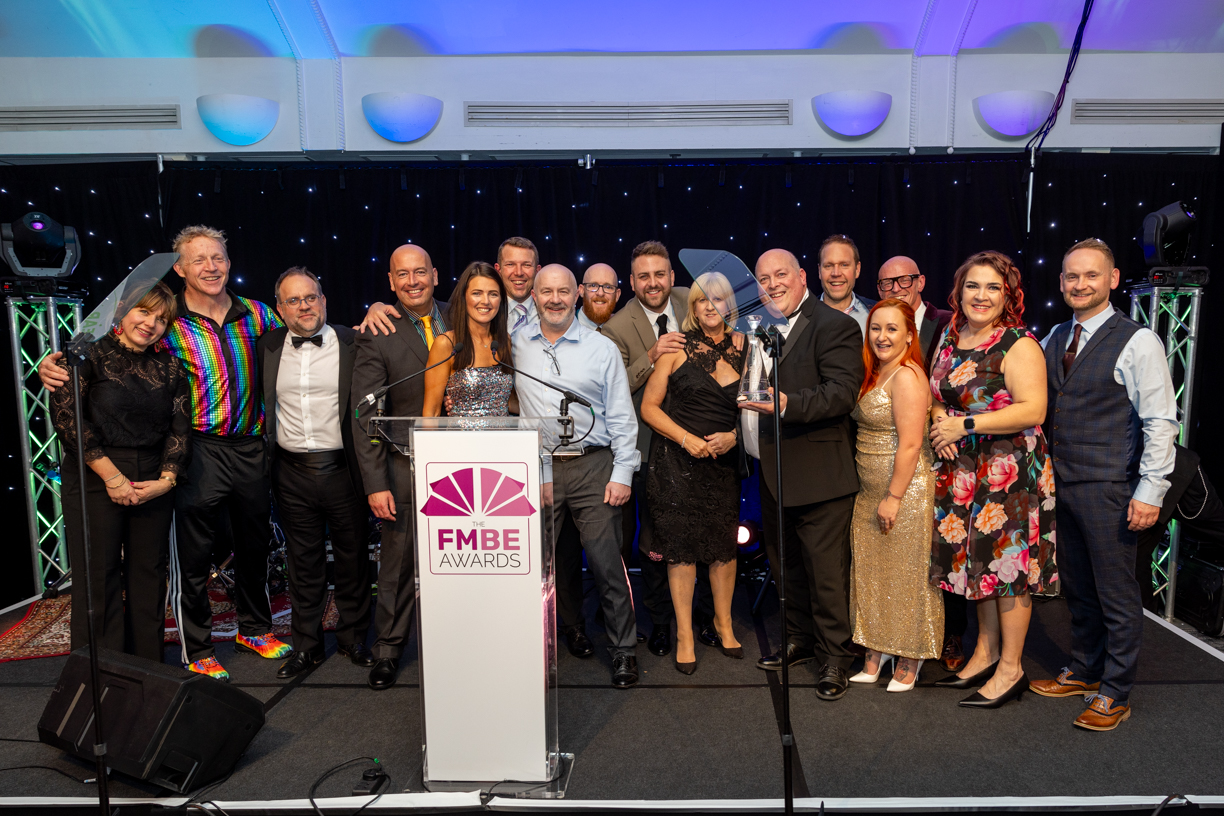
2024 – Gold, Powerforce, HariMoco (Haribo with Molson Coors)
2023 – Gold – REL Field Marketing – Weetabix (pictured above)
2022 – Gold, Powerforce, HariMoco
2021 – Silver – REL Field Marketing – Weetabix
2020 – Silver – REL Field Marketing – Weetabix
2019 – Silver – REL Field Marketing – Dell
2018 – Gold – Powerforce – Pladis
Silver – REL Field Marketing – GSK
2017 – Gold – Powerforce – Molson Coors
2016 – Gold – REL Field Marketing – News UK
2015 – Gold – REL Field Marketing – Mondelez
Brand Ambassador of the Year – Best Result – Advantage Smollan
2024 – Gold – Caroline Anderson – REL Field Marketing – Weetabix
Silver – Tom Severs – Powerforce – Lenovo
2023 – Silver -Adam Golightly – REL Field Marketing – Weetabix
2022 – Silver – Rob Hatton – Powerforce – HariMoco
2021 – Bronze – Jamie Spence – REL Field Marketing – Weetabix
2020 – Gold – Andrew Elliott – REL Field Marketing – Weetabix
2019 – Gold – Kryzysztof Edelman – REL Field Marketing – Nikon
2018 – Silver – Phyllis Ward – REL Field Marketing – Weetabix
Silver – Madassar Ishfaq – REL Field Marketing – Dell
2017 – Gold – Caroline Firkins, REL Field Marketing, Tetley
2015 – Silver – Jamie Dalton – REL Field Marketing- Molson Coors
Looking back, it is remarkable how dominant these two Advantage Smollan agencies have been in what are two of the most sought after categories at FMBE Awards. The two agencies have been competitive against each other and each brand team competitive internally in that time. This is born out in the results for the brands.
Part Three – Touring and Exploring South Africa
On the Hoof in South Africa
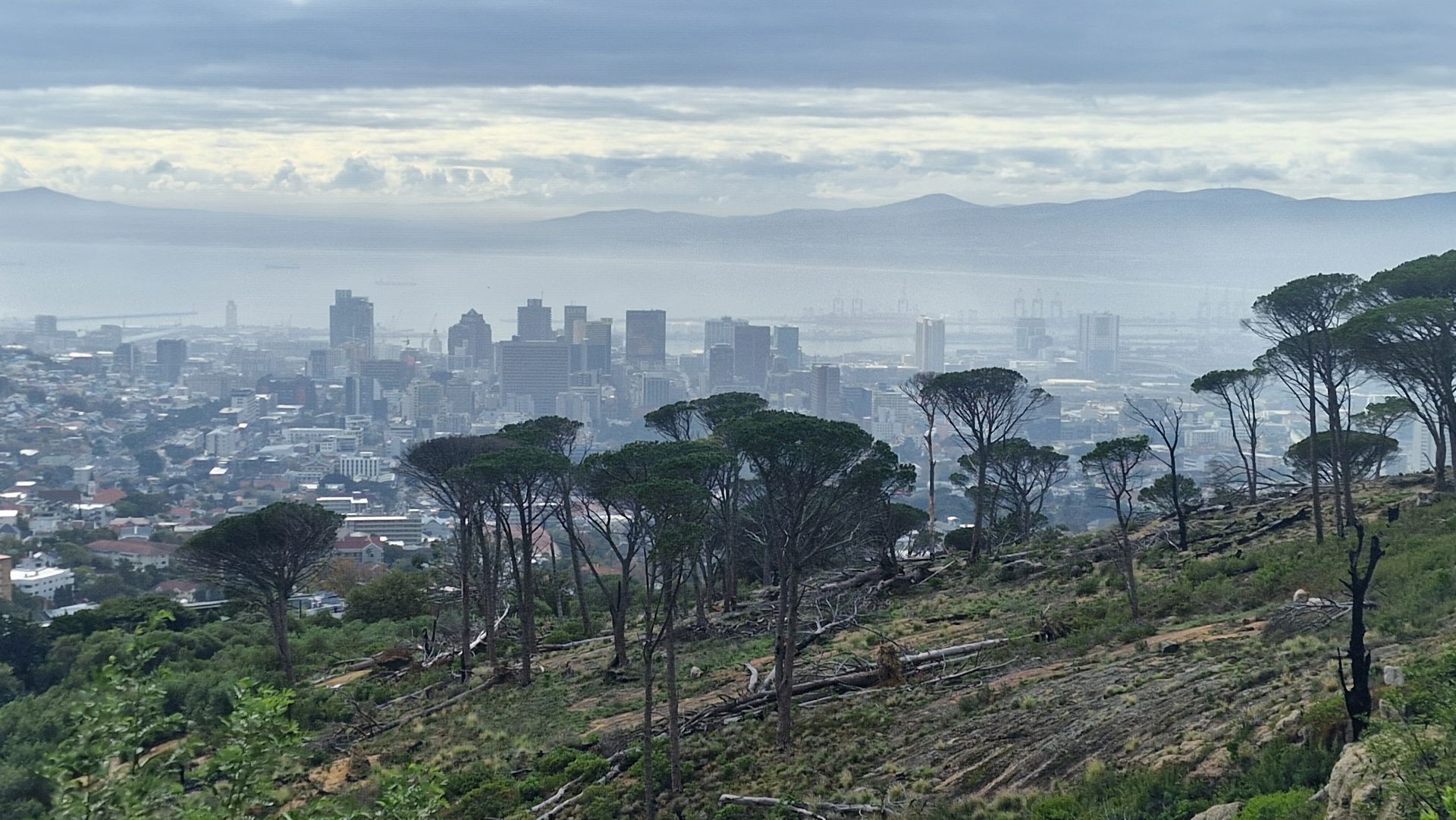
Frank Wainwright explored South Africa whilst visiting Smollan in Johannesburg and running Comrades Marathon.
If you travel for the first time to South Africa beware that family and friends might be concerned. The city crime rate is off the charts. Pietermartitzburg tops the global chart for crime rate, Pretoria is second, knocking Caracas in Venezuela into third place. Johannesburg, Durban and Port Elizabeth are all top ten.
It is an unenviable problem. Crime levels, and the associated costs to society, are perpetuating the issue of unemployment that created the wealth disparity in the first place. But it is being tackled as the cities, led by Cape Town, look for ways to embrace tourism and events to kickstart local economies. Cape Town’s marathon is currently a candidate for Abbott World Major status something that would be a huge reward for the current efforts. South Africa is such a sports driven society, uniquely a host to the football, rugby and cricket World Cups.
Cape Town has deployed extra street police. These are less law enforcement officers, more shepherds and guardians on the look out for out of place tourists. They respectfully direct you away from areas considered dangerous. Some of these areas look and feel innocuous enough but can turn at night, especially if a power cut occurs. These measures are working, and areas of town are being won back from bouts of lawlessness. Back in 2023 there were also relatively high numbers of muggings in the Table Mountain National Park, but the risk has been significantly lowered this year after an increased police presence and arrests.
By following the right advice avoiding certain areas and not flashing mobile phones around the risk of being targeted by criminals in South Africa can by significantly mitigated. None of the tourists that we met had felt at risk. The relatively inexpensive Uber system means that safer travel around the country is affordable and accessible.
And the tourism experience in South Africa, after mitigating crime risk, is exceptional.
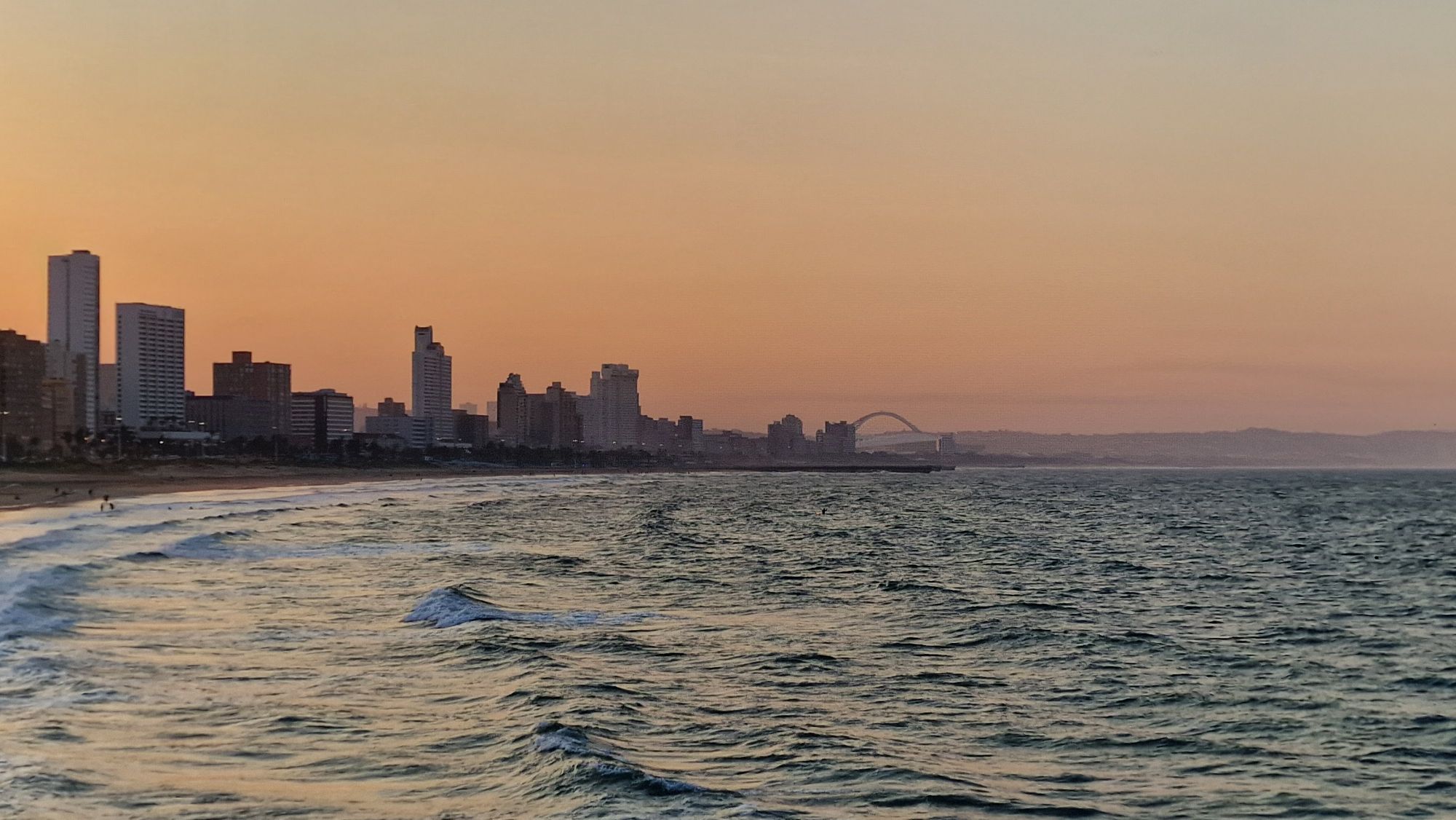
Boulders Beach and the penguins
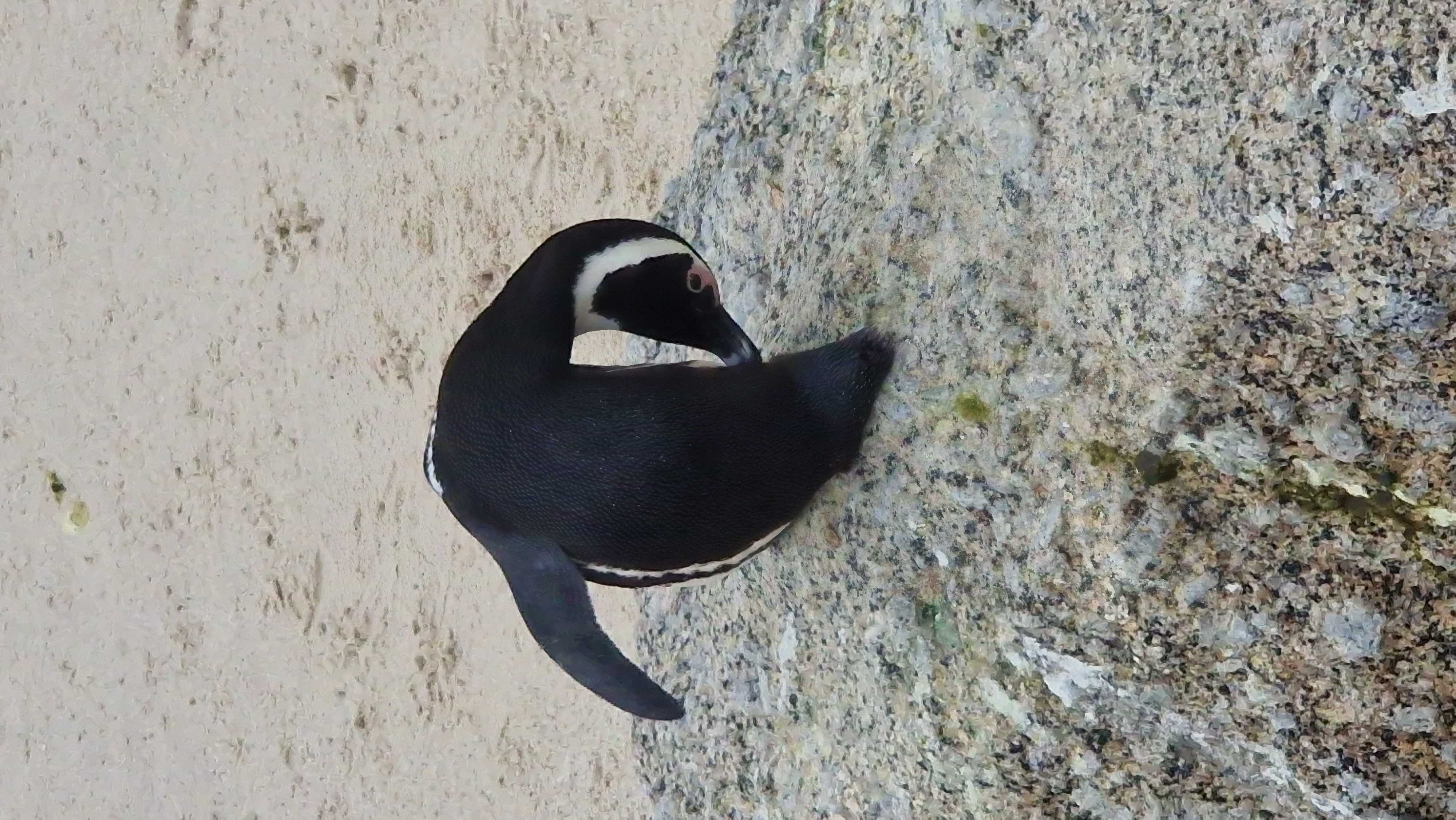
This extraordinary visit can be achieved with a guided group or independently. I wanted a coastal run to explore beyond the penguins, so I travelled down from central Cape Town in an Uber for about £20.
This African penguin colony is beautifully laid out with walkways so that you can observe but not disturb the penguins. The penguins are fully immune to their observers and so you can observe them interacting with each other and defending their spot vs visiting gulls and rock hyrax – the small mammals also known as dassies.
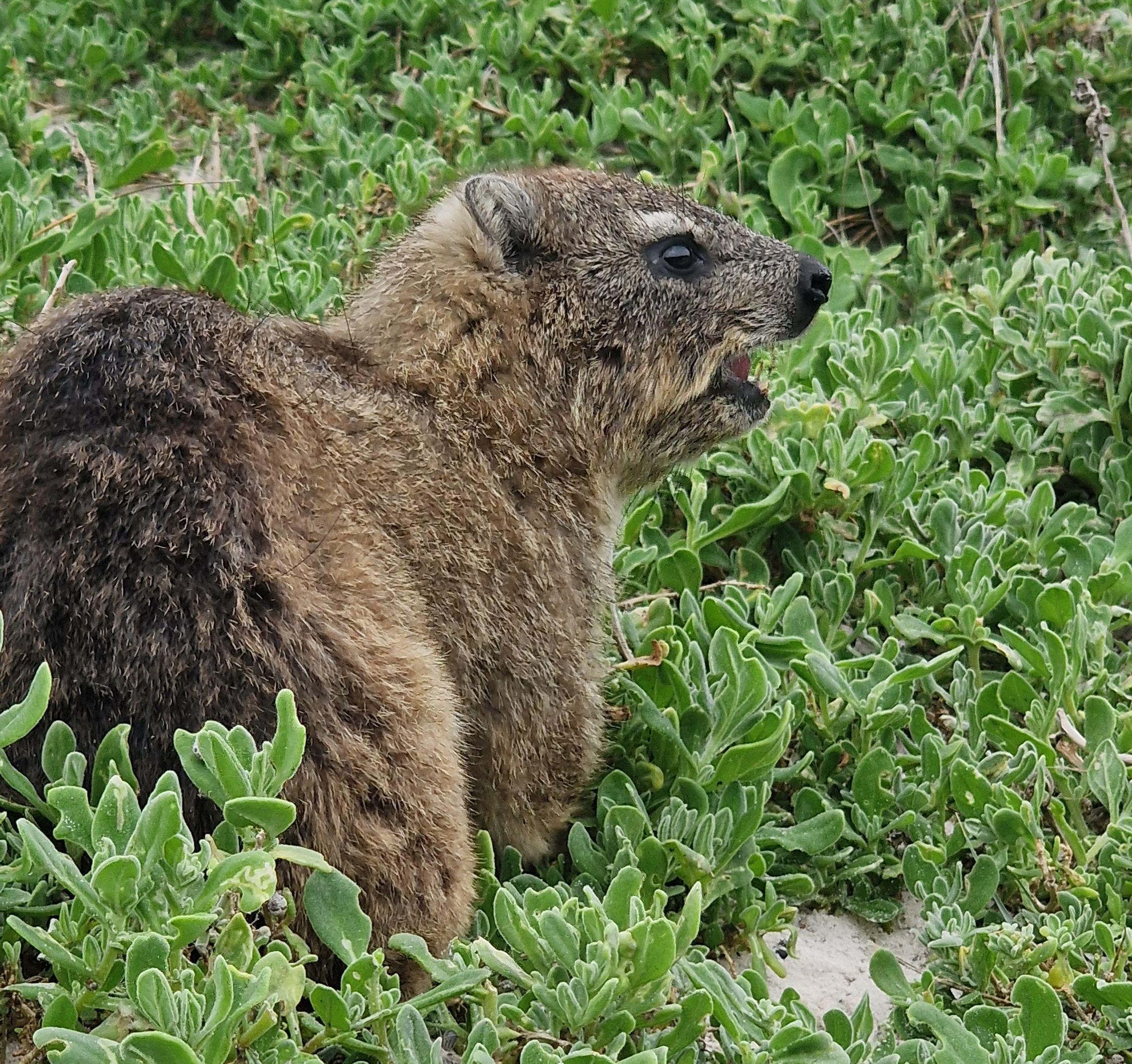
It is also quite the dramatic setting, penguins launching out into the surf whilst on the shore fluffy babies, often only inches away from the viewing area, squawk for attention. It is a photographer’s paradise blending the wild with the charismatic and the close up.
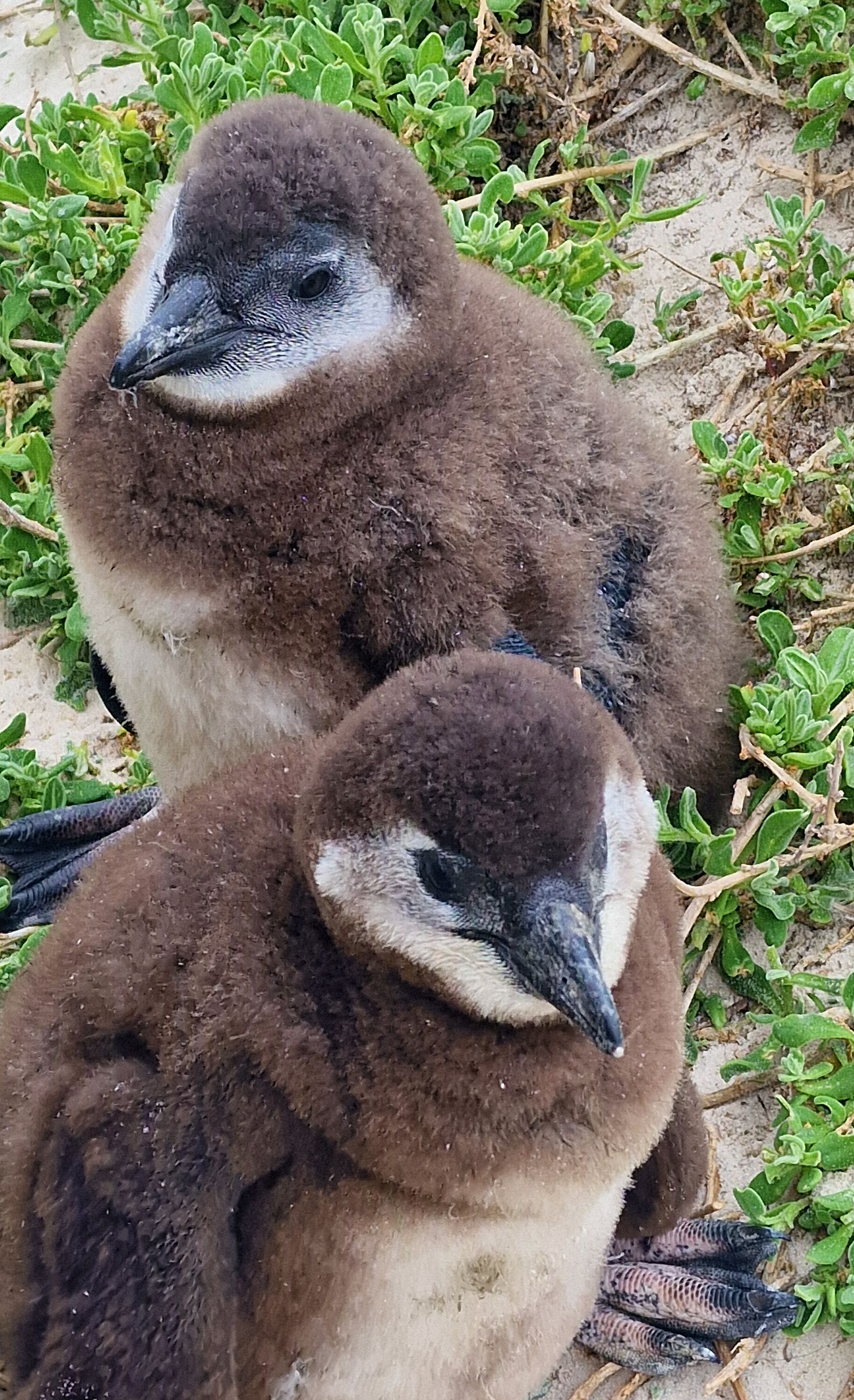
The setting is magnificent. On many a day the granite boulders and crashing waves would be spectacle enough without the attendant penguins.
It is these dramatic boulders that drew me onwards into the landscape, along the coastal path and road that leads south from the penguins to the Cape of Good Hope. It is a folkloric promontory, the place long seen as the point where mariners turned around the southerly point between the Indian and Atlantic oceans (though in fact that point is 105 miles further along the coast at Cape L’Agulhas).
Running along this coastline was so rewarding, offering angular views of the ocean through the dramatic boulder formations. I even found an ocean safe swimming area with a slide carved into the rock at the end point. I was able to persuade myself that I had run to a mystical playground at the end of the earth as I slid into the cool water.
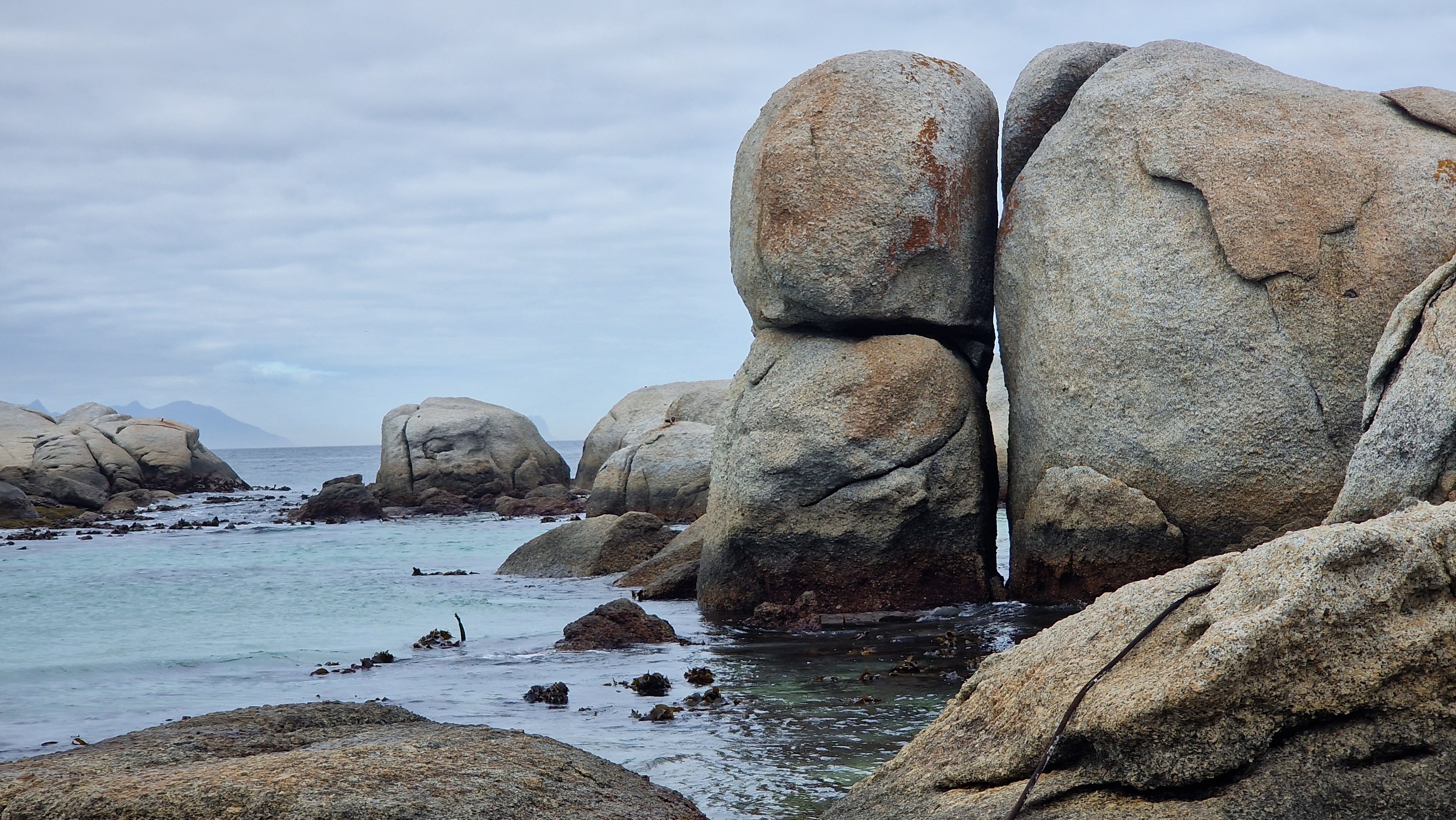
Table and Lion’s Head Mountains
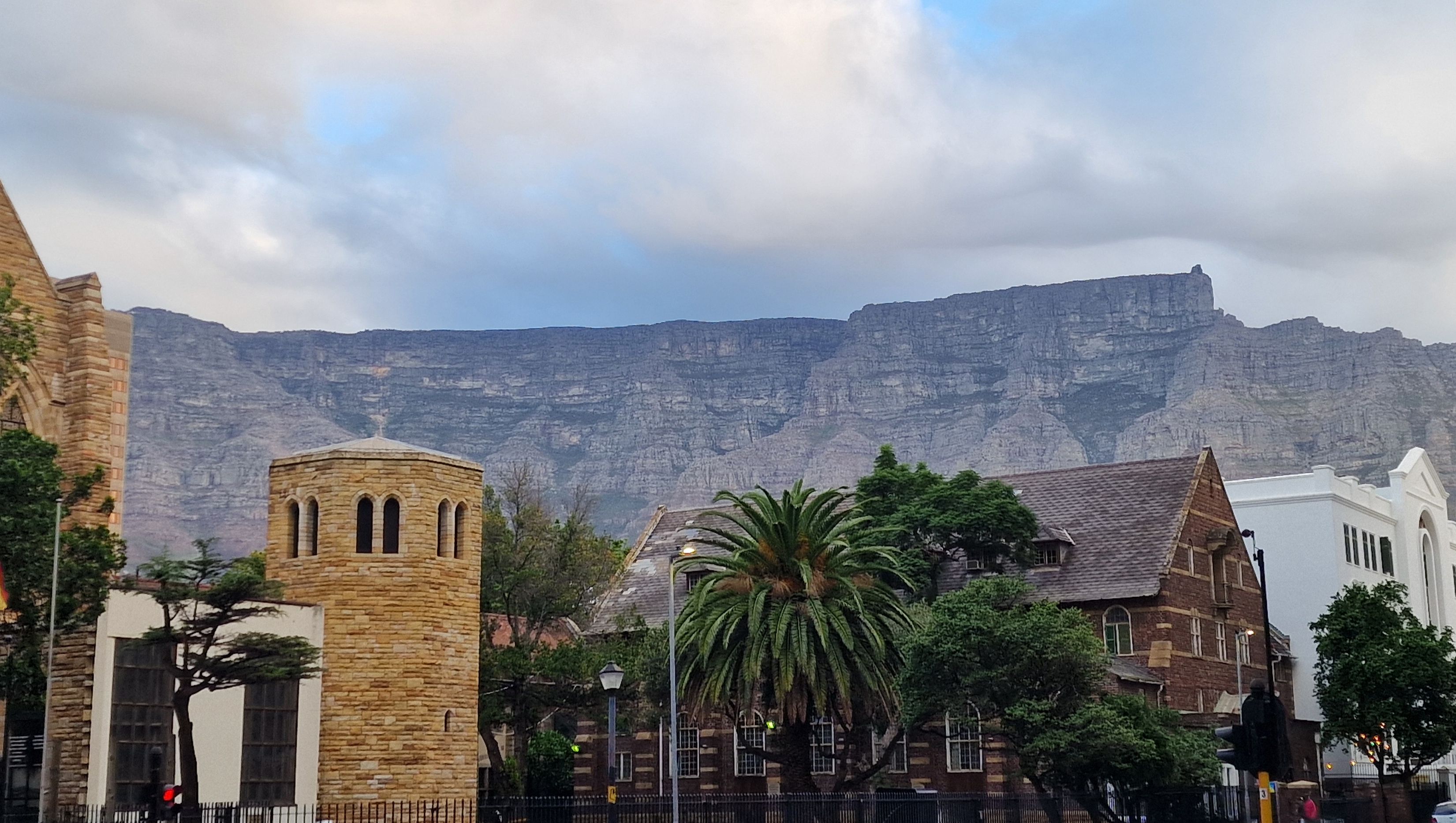
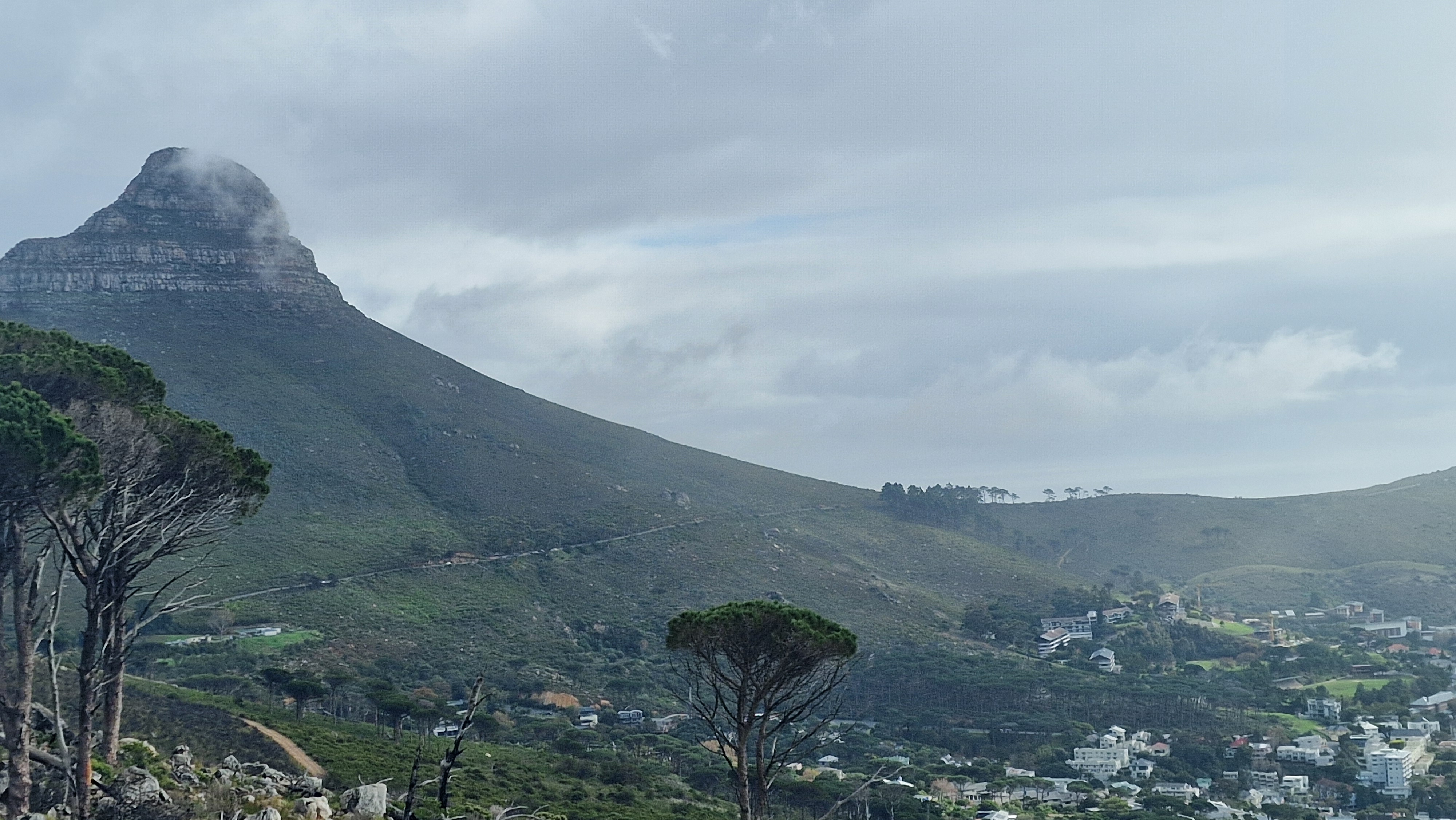
Table Mountain is such a spectacular location and the neighbouring Lion’s Head has just as much drama without the worldwide recognition. Both offer the potential of dramatic views across the city and ocean.
Joining my running buddy Liliana, our choice was to run around Lion’s Head via a coastal path and then up to the main Table Mountain climb. The run took us past the popular cable car system that goes to the top of the imperious 1085m mountain. Conditions on the climb were variable offering good views up to about 800m before ascending into clouds. This visit was during the South African winter, and we had shortened daylight but a fairly mild to contend with.
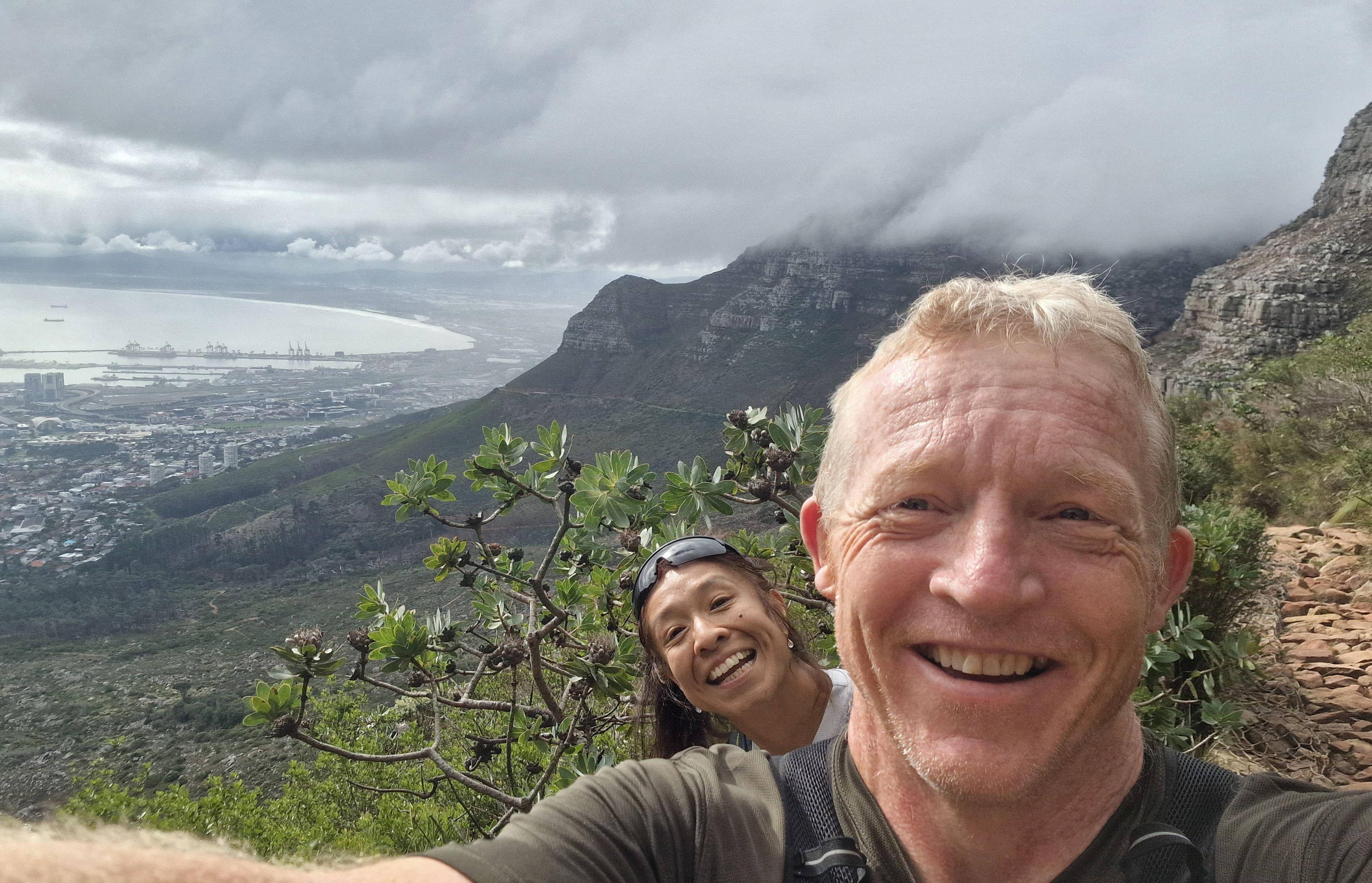
If you summit by the cable car you will end up a few meters short of the actual summit which lies across the table at McClear’s Beacon. It was blustery up there, but I wanted to make the actual summit and jogged across quite a waterlogged landscape on a part with loud amphibious croaks, pops and groans coming from the wet terrain to either side – the Cape Chirping Frog. It was very eerie with barely anyone around. Finally, summitting I made 1085m, the exact same height as Yr Wyddfa (Mount Snowdon). As fog rolled there was plenty to remind me that all mountains need respect. The Patteklip Gorge descent, rated suitable for hikers of all levels, became slippery in the light rain and was a much slower descent than I imagined on the way up. Fortunately, I had allowed enough time to get down before the afternoon light faded away.

Stellenbosch
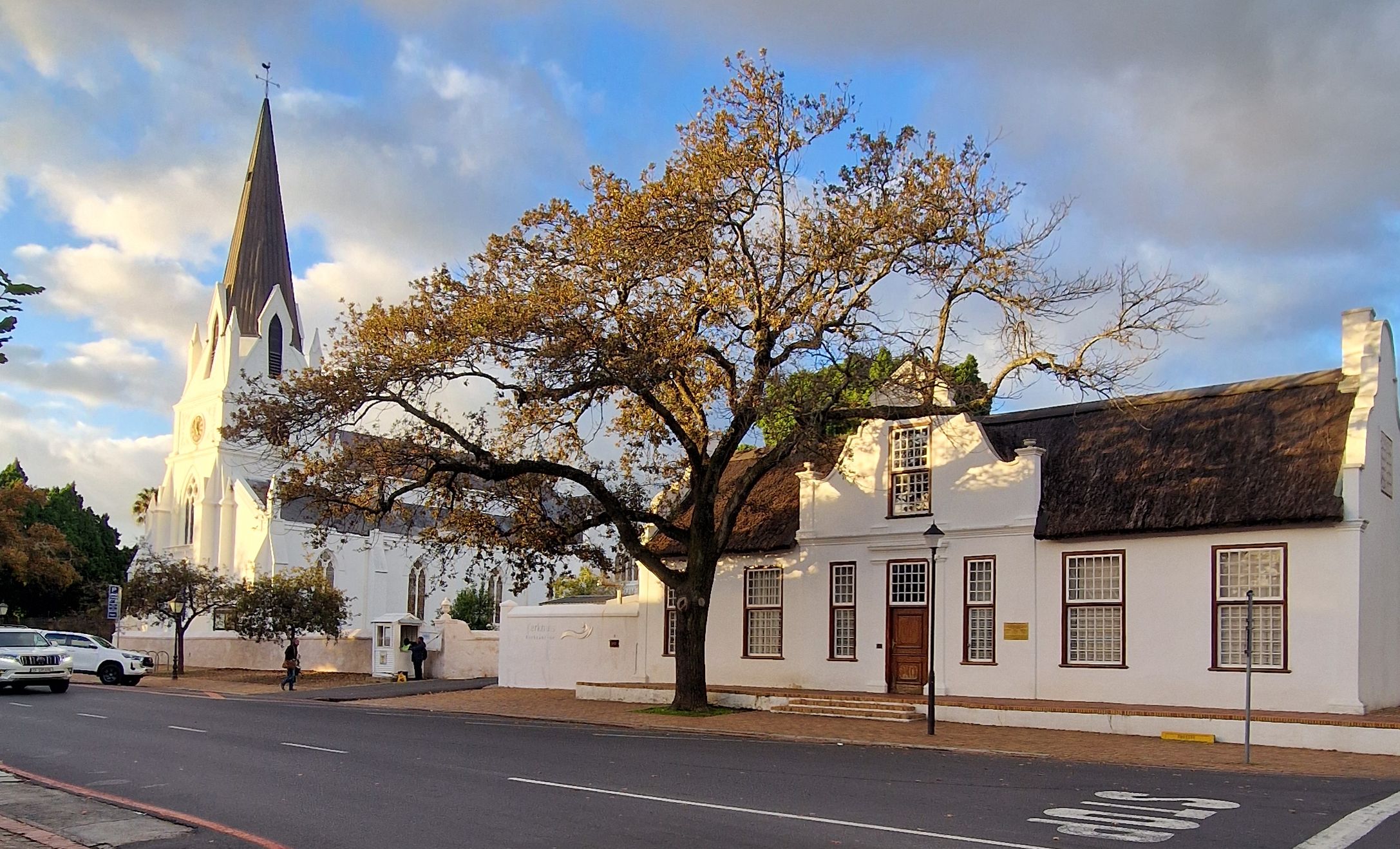
A visit to Stellenbosch is a very viable extra for anyone flying in or out of the airport at Cape Town. This small town and extensive wine growing region was established in 1679 under the auspices of Simon Ven Der Stel. In Dorp Street, running across the town centre, it still has the colonial architecture associated with the Cape Dutch.
There is a museum in Stellenbosch where actor guides bring the settler history to life.
Apartheid
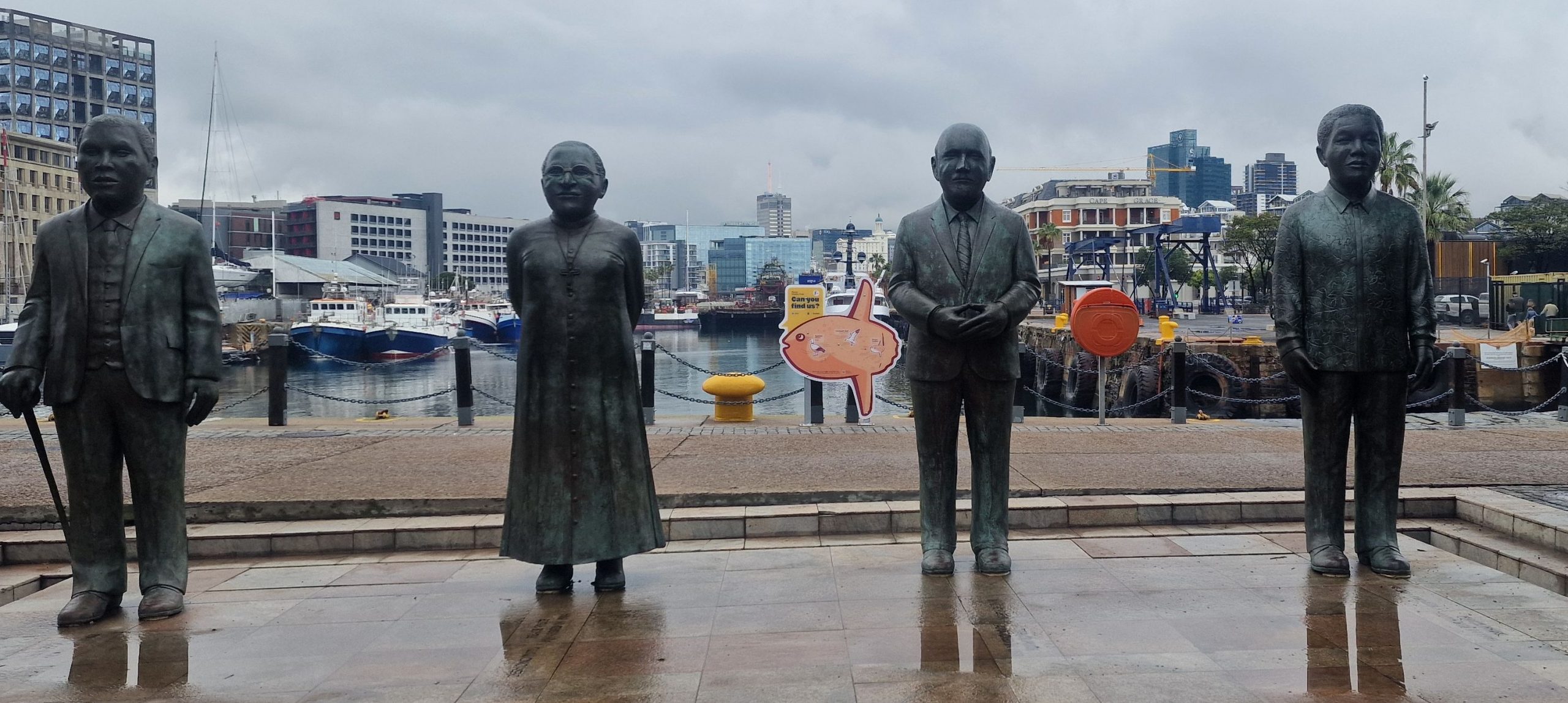
Of course no visit to South Africa is truly complete without taking a view of its most modern troubling history and this can be done at numerous locations, espcially visiting Johannesburg/Soweto and also by taking the boat from Cape Town to Robben Island where Nelson Mandela was imprisoned. A worthwhile museum of Apartheid is in Johannesburg.
History is on display in South African parks and city centres with colonial authorities, including slave owners still presented alongside reformists. Statues to white supremecist and British Imperialist Cecil Rhodes around South Africa have been the source of controversy with one being bronze being beheaded in 2020. Removal of a Rhodes statue from Cape University saw a reciprocal movement at Oriel College Oxford where the famous Rhodes Scholarship was founded. Rhodes statue though still occupies its perch at the college as well as a significant locaton in Company Park at the heart of the city of Cape Town. Rhodes influence is so strong in Southern Africa and at Oxford. He was a founding figure of the diamond trade and company De Beers, investor in universities, including Rhodes University SA, and founding father of Rhodesia (now Zimbabwe and Zambia).
In Pietermaritzburg, the city where Comrades began, a statue to Gandhi evokes the era when he stayed in the country to spotlight the racial battle against Indians in the country. Gandhi was kicked off a first class train in Pietermartizburg.
South Africa post-Mandela still echoes of this great leader with pride in his achievements acclaimed. One tourism guide told me that Mandela had been an extraordinary unifier. She had seen South Africa open its society when the Rugby World Cup had arrived, a sport that had been a white bastion opening iteslef to national pride. When Mandela had spoken in Africaans at the RWC, she told me, he had built a lasting bridge.
Tala Game Reserve – near Durban
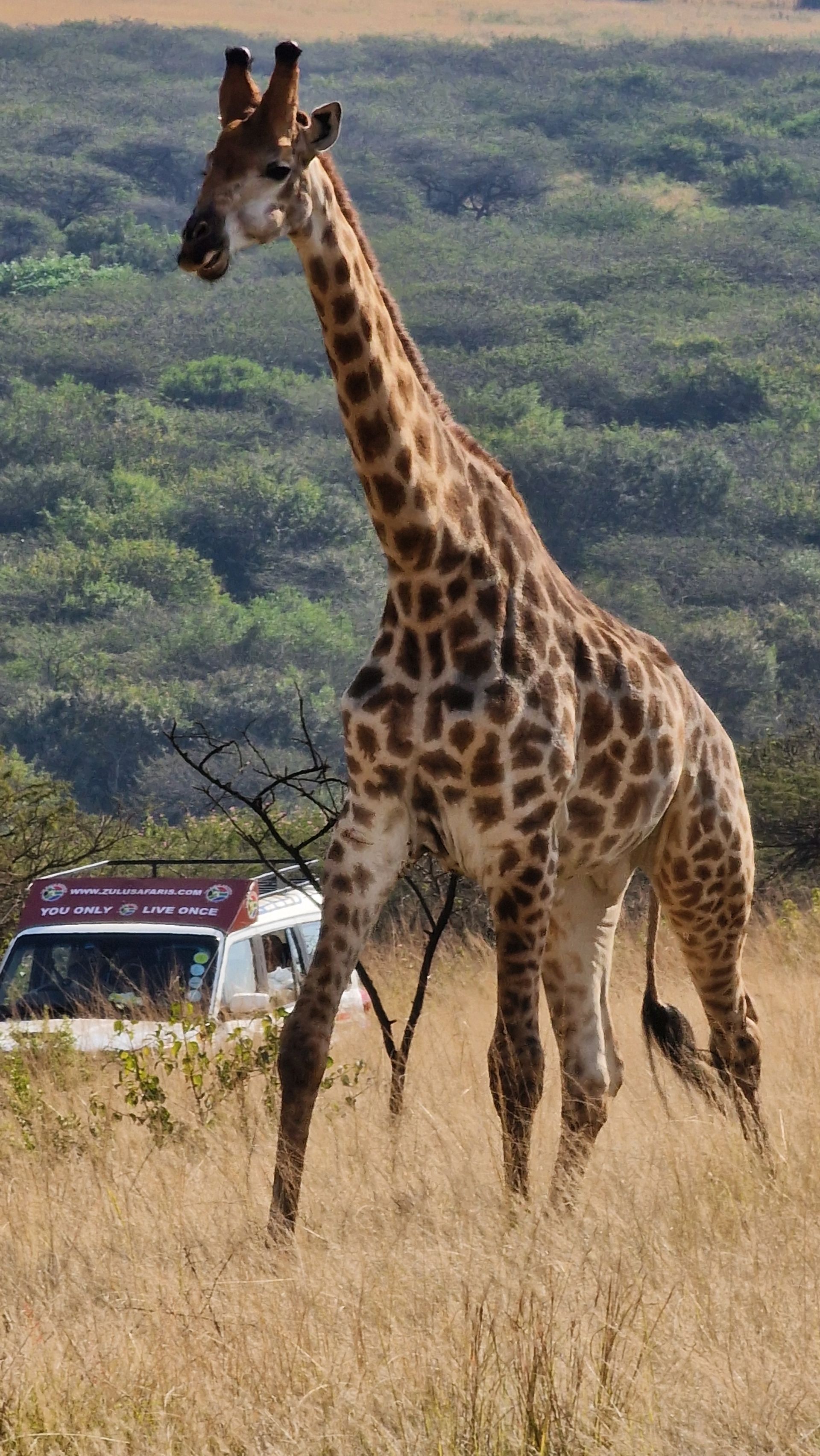
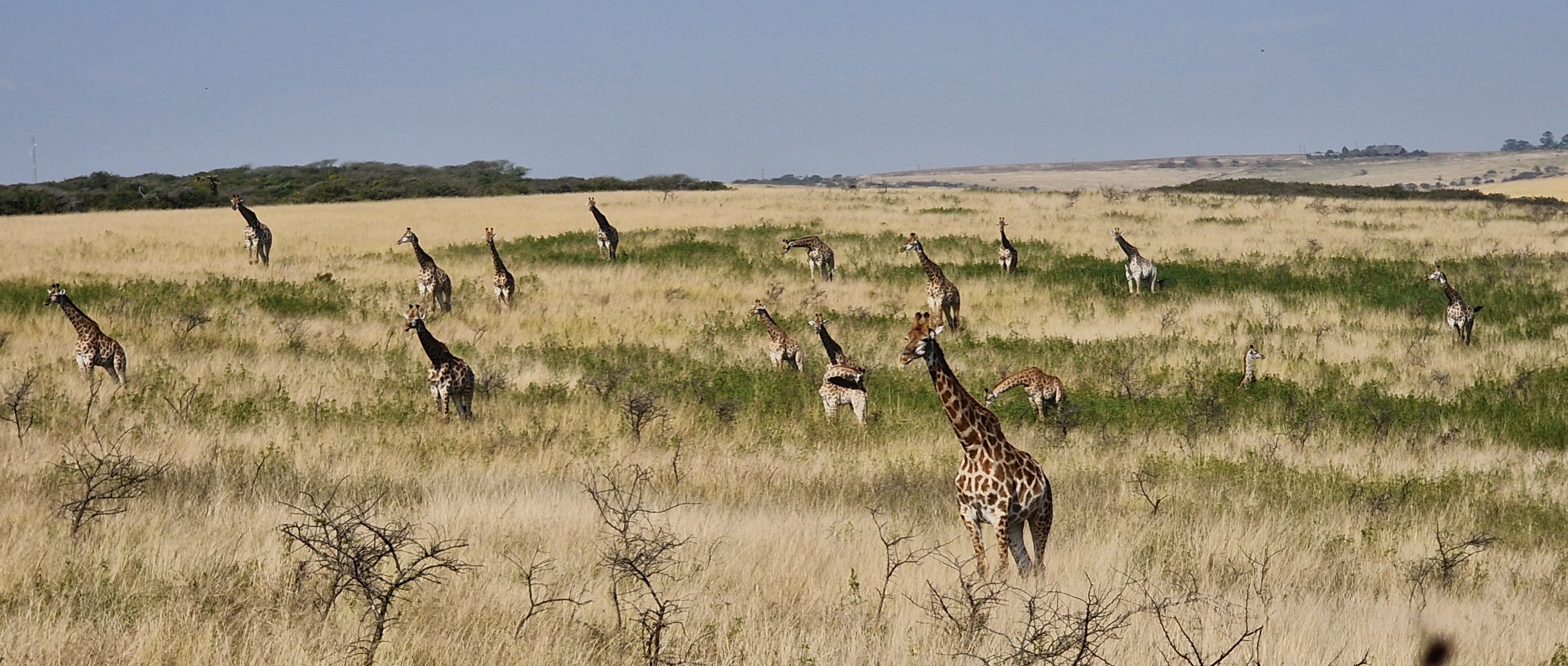
Kruger National Park is South Africa’s most sought after wildlife experience, but my itinerary wouldn’t allow time to fit that in. Arrival in Durban ahead of Comrades Marathon meant a day to fill in and whilst I have seen African wildlife before the nearby Tala Game Reserve offered an opportunity to see some of the plain animals in their natural habitat. Small game reserves have a challenge as they are often not big enough for major hunters and that is the case here. These animals live without the threat of major predators but can otherwise be considered wild, behaving and moving as a herd. Tala’s highlights are all easy to find on any game drive and whilst rhinos are available in the park, the best viewing were the wonderful giraffes including a recent baby and some pleasing appearances from warthogs, often amongst the more private of Africa’s animals.
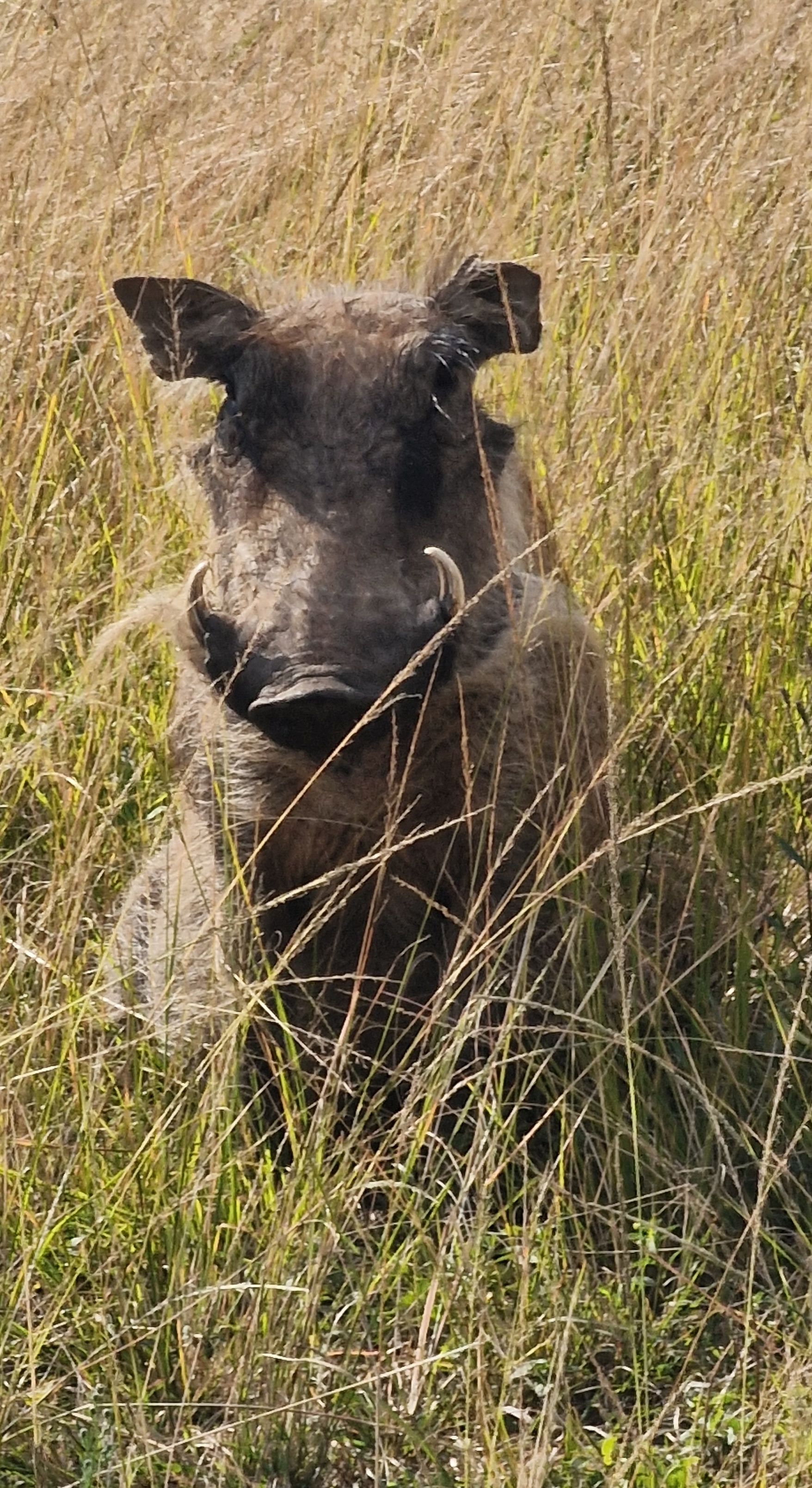
Tala provided a very good experience for anyone not desperately trying to tick off big 5 safari sitings and instead stay content to seeing the major herbivores up close. Personally, I’d prefer this than to see big cats squeezed into a congested landscape, but perhaps that is because I have had the advantage of grand days traversing wilder locations.
It was easy to appreciate the opportunity Tala provides for close up observation of these huge herbivores. It was wonderful to see them interacting.
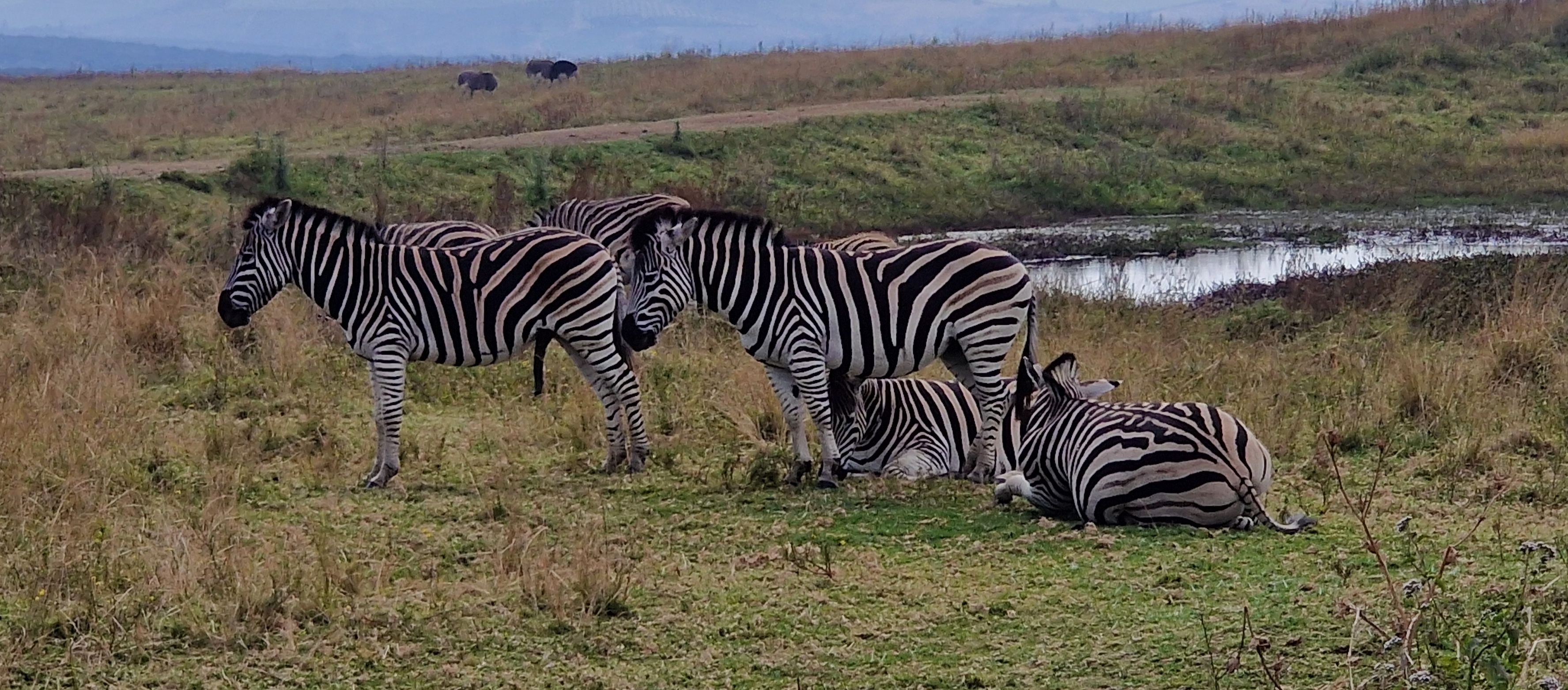
1000 Hills Parkrun (and Zandvlei parkrun)
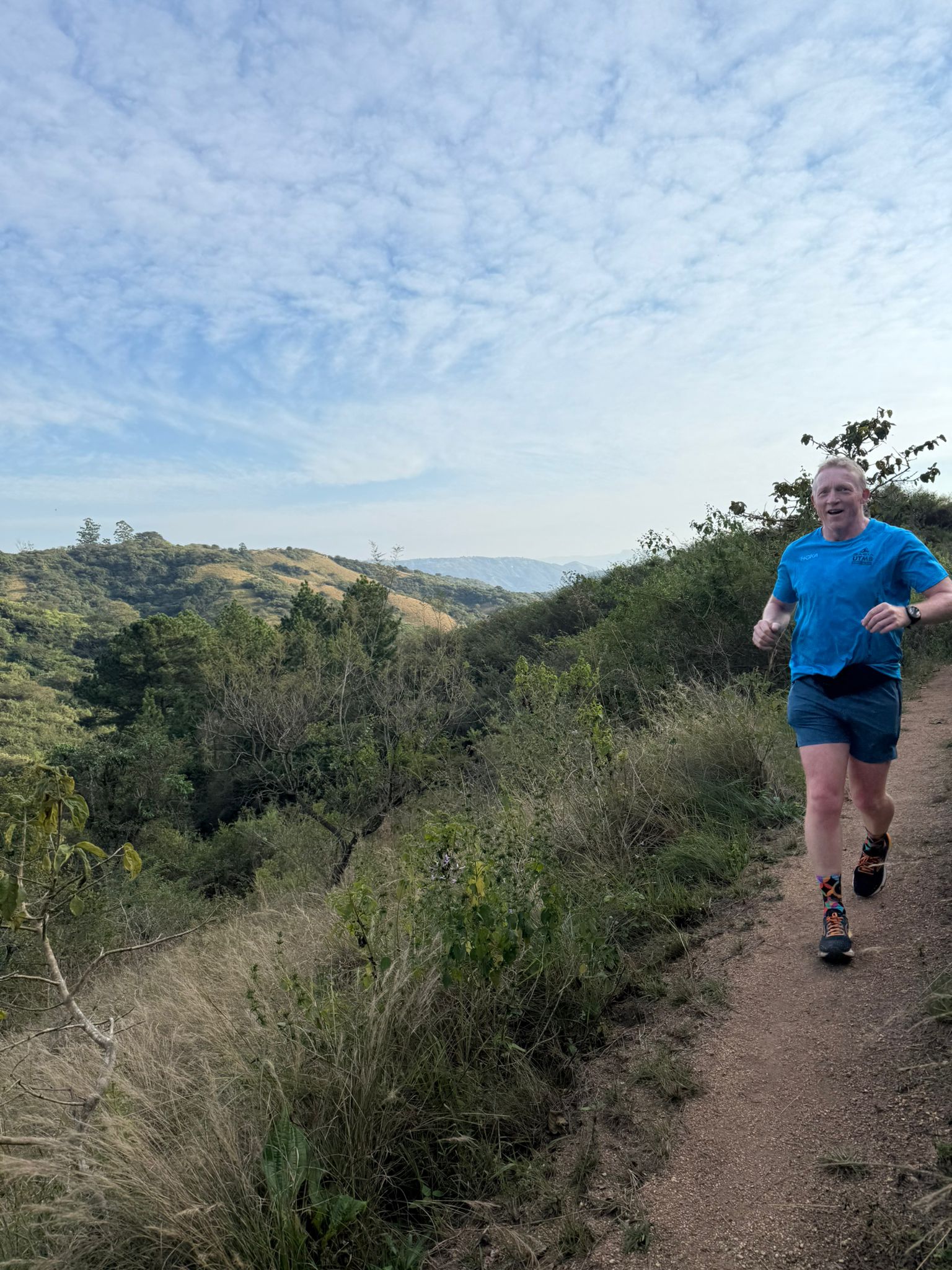
South Africa has really shared the Parkrun bug born out of the UK with parkruns flourishing across the country. I noticed some with evocative names.
Some people even make parkrun pilgrimages whilst visiting the country in search of an elusive letter Z parkrun (there are no Z parkruns in the UK). Indeed, I picked up a Z parkrun in Cape Town at Zandvlei to join up with Z collecting friends. The Zandvlei run itself though was pleasing but unremarkable.
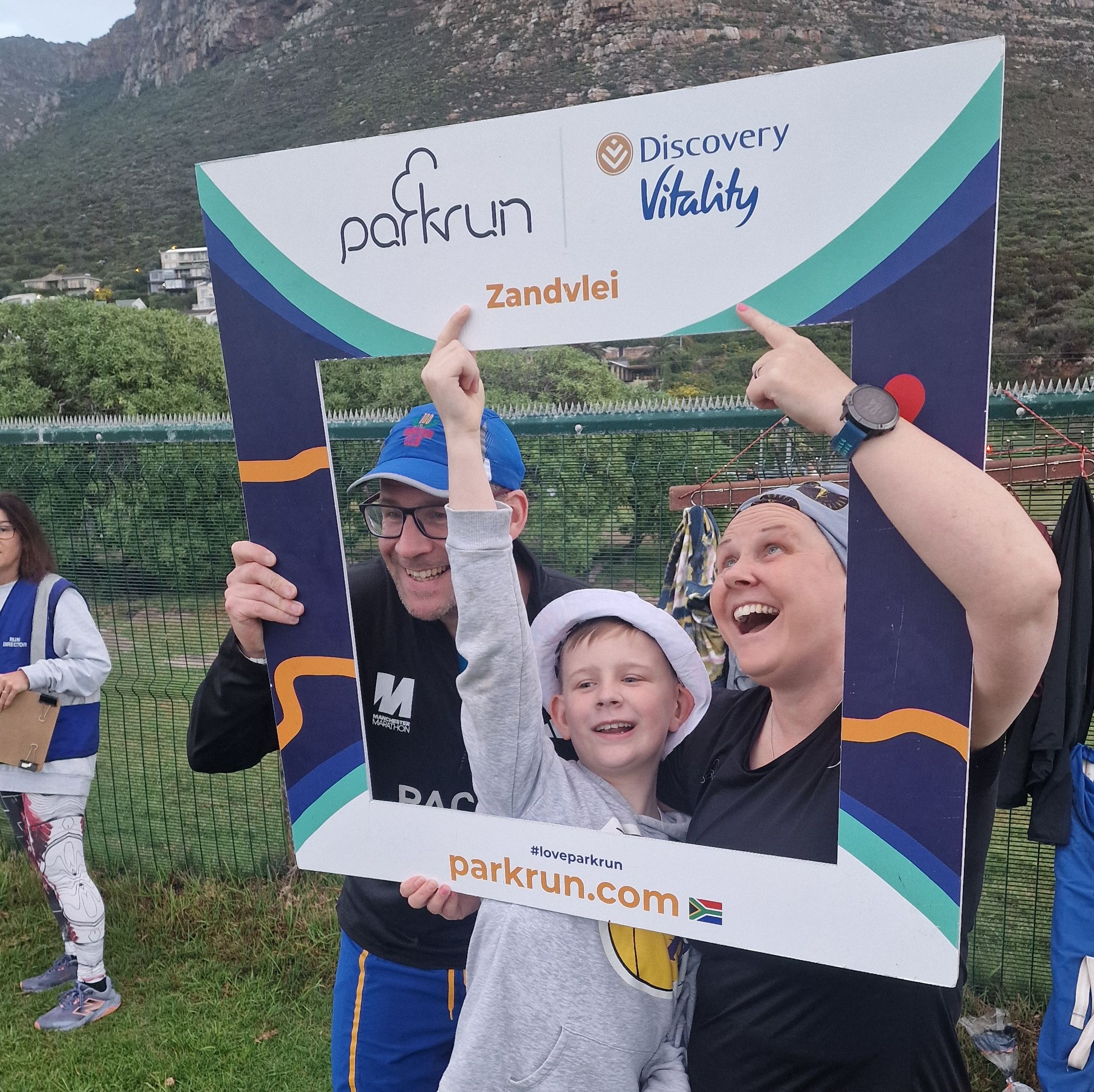
Not so 1000 Hills Parkrun, named after the famous Valley of 1000 Hills beauty spot in KwaZulu-Natal to the west and north of Durban. That was anything but unremarkable.
1000 Hills is an area people travel to in order to gain an appreciation of Zulu culture, the natural habitat and outdoor recreation. It is also an area broadly redolent of British colonial history. Rorke’s Drift, the battle location made famous by the film Zulu is away to the East from here.
The parkrun, carved into the hillside amongst the vervet monkeys, is both one of the world’s most beautiful and rated as one of the most challenging. It has an average completion time of 46.43 vs a typical course average of around 32 minutes on a standard track. There is 200+m of elevation on the 5K route. Regular switchbacks on the zigzaggy course leads to the fun spectacle of runners popping in and out of the jungly hillside bush.

Parkrun tourism is about more than just running in a new location. They provide an excellent opportunity to learn about a locale with people who are passionate about their local surrounds, parks and gardens and who will provide visitors with travel hints and tips over a convivial post-run coffee.
Comrades Marathon – Sunday 8th June 2025
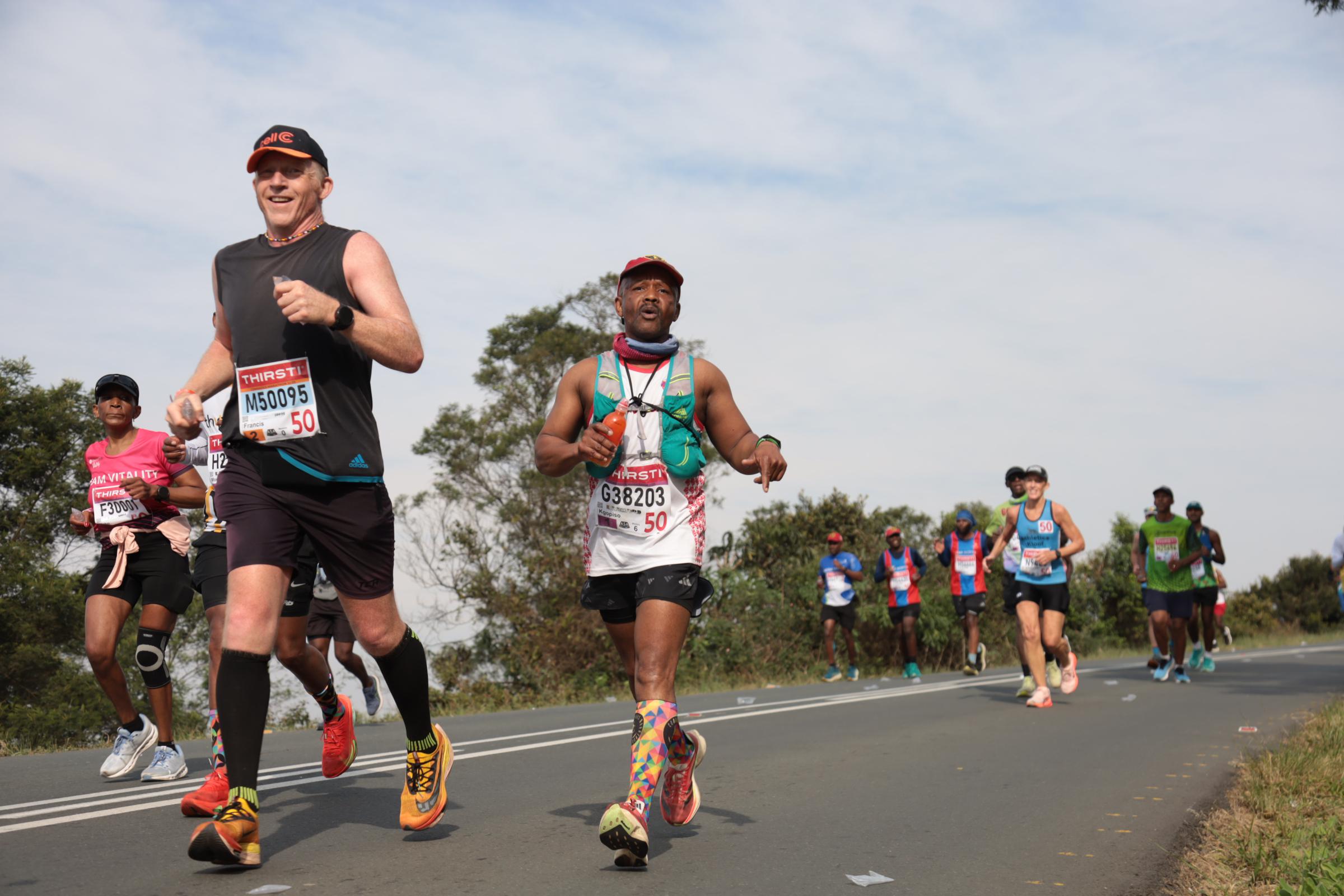
The famous 56-mile road ultramarathon has run between Pietermaritzburg and Durban each year since 1921 with only wartime and COVID causing a hiatus. The event alternates direction each year. This was edition 98, a ‘downhill’ run, finishing in Durban.
I have no idea how many of the 22,000 runners were based in Pietermaritzburg for this event. It felt like none as our coach from Durban inched its way into KwaZulu-Natal’s second city at 4am, ahead of dusky 6am start. There can ben few other processions like it, 22,000 runners on the move to a start area with pens A-Q based on your qualifying time, A at the front, the elites. An unseasonably 27C sunshiny day awaited us.
My qualifier, a 4hrs 10 min marathon put me into pen M, a ‘second wave’ pen. I can run a marathon 45 mins quicker than that, but was happy with my qualifier that would, according to my plan, allow me the encouragement of being fractionally quicker than those around me. My further strategy was to pace up a bit early on. That goes against the norm for distance running, but I wanted to get miles in ahead of the heat of the day and I am experienced enough to manage the inevitable decline would be sure to hit me in the hillier second half of this run. The ‘downhill’ Comrades has a net elevation loss but still includes 1219 metres of uphill gain en route. In short, you need to run those downhills really well.
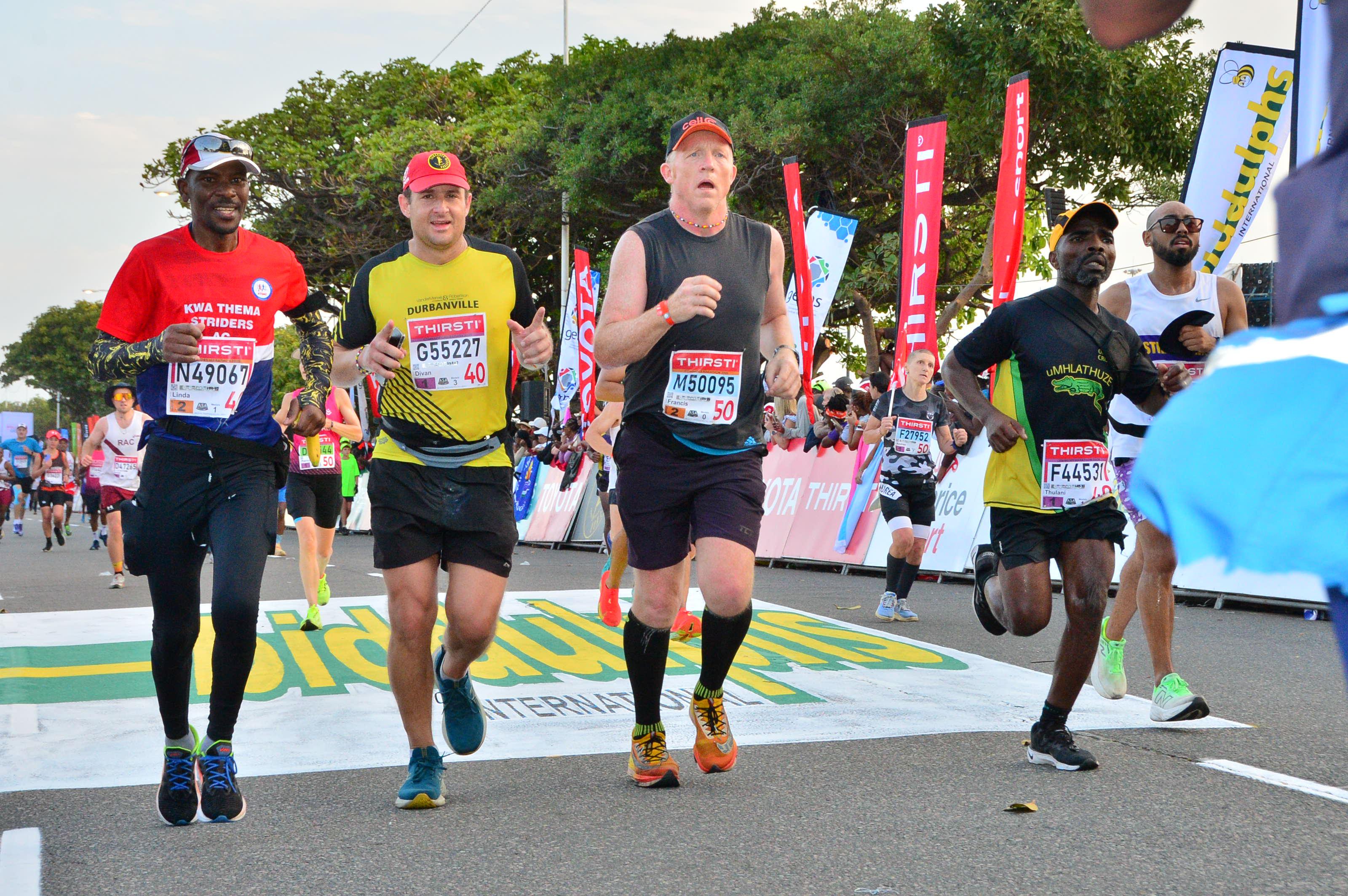
My further plan was to run carrying carb+protein gels (rather than pure carb) for a more sustainable energy source whilst topping up with Coke/Energy and the odd bite of solid food at this race’s famous Run Zones. These Run Zones are the 48 refreshment stations on the route staffed by 5000 event volunteers and extended by the support from family and friends, locals, running clubs and sponsors. There are singers and dancers too – the result a carnival of colour and noise with zones that are close enough together that you could sometimes see the next one before leaving the last.
My strategy worked. I am pretty poor in hot temperatures. On the news of 27C I modified my target from 9hrs 15-45 to 9hrs 30 – 10hrs. I knew that was ambitious, but I really wanted the Robert Mtshali titanium medal accorded to 9-10hr finishers, the medal that commemorates the first unofficial black participant in Comrades. When the day heated up, I took full advantage of the abundant water en route, drinking one and pouring one of the cold pouches on offer. I balanced this with salt tablets from my belt and an occasional salted potato from the volunteers. I crossed the line in a gun time of 9.43.57, or 9.41.23 chip time taking 5473rd place, just about a top quarter place. The race data shows I started in 9978th place, a net gain of 4505 places. The data that after a quick start, coming up the field by nearly 3000 places in the first 5K I then settled to a more gradual but continual progression through the field. For many ego gets in the way of this tactic as the desire is to qualify with the fastest time possible and get up and running from a more ‘prestigious’ start pen, but taking this tactic allowed my deeper endurance experience to shine, slowing down at the end less than those around me did.
Comrades Marathon had been a rewarding experience for the atmosphere and the competency with which I got just about the best result possible out of myself.
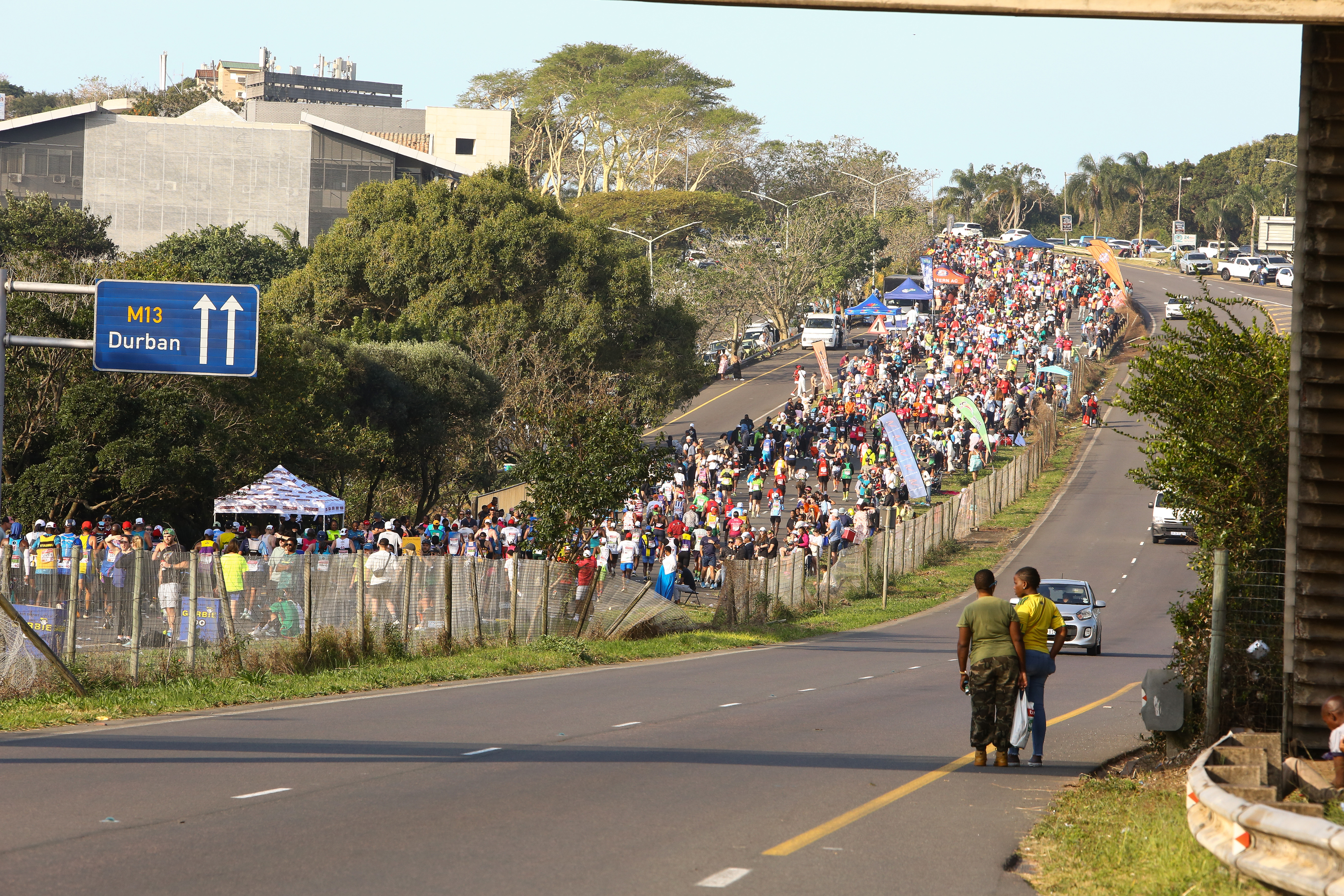
Advice on taking part
- You can qualify for Comrades with a 4hrs50 marathon time or better and just enter. South Africa in June is the same tome zone and weather expectations as the UK so there is little acclimatisation needed – though the journey is long. Be warned though if 4.49 is really your best marathon then beating 12 hours for the 56 miles is going to be a challenge.
- The cut off and the graded medals system make Comrades a race for everyone in it, keeping it exciting. The cut line is the biggest race of all with 500+ finishers crossing the line in the last 3 minutes. Anyone running 12hrs and one minute will find a human wall, blocking off the finish line. It is rigorous and brutal.
- If collective human willpower will get you to a finish, then you will finish Comrades. From the Novice zone in the Expo, to the run zones on route to the well-wishing of strangers, Comrades offers an experience unparalleled in ultrarunning and probably unparalleled at any running event. I’d include my excellent experiences running London and Berlin marathons in that. The call it ‘The Ultimate Human Race’ and I don’t think that is an exaggeration.
- For such an extraordinary event the congested finish line experience is poor. There are also quite poorly handled queues for bags and pen access leading up to the start.
Above almost all other considerations, Comrades Marathon gives the runner a unique vision of a slice of real life that borders on utopia in places. The carnival of characters, participating in and supporting the race come out of the townships, out of the elite schools, out of the suburbs and the cities. They come from neighbouring countries (Lesotho is very near) and far and wide. They speak all of the 12 official languages of South Africa and nearly all of the languages of the world.
Any everyone is pushing each other to dance through the heat of the day.
Each step down the Comrades route is laden with meaning. “Together we can do this.”
The spirit of togetherness that Comrades engenders gave me inspiration and hope.
